To start with, as a visual reminder of the route covered by this trip, here is the road map again:
So, after the nice sightseeing around the Topčider Park, the next destination was Topčider Cemetery where I went to search for the grave of Archibald Reiss. At the entrance into the cemetery I asked a woman who seemed to work there whether she knew where the grave was and she told me: “It’s there – straight, right and left.” I laughed with my friends when we moved away. It was clear that the woman had no idea where the grave was, but she did not want to admit it and be discourteous by not providing the requested piece of information. I can say right away that the grave is not to the right. Once you enter the cemetery, a couple of dozen metres farther on the left-hand side, directly after the church, you can see the grave. Since I wrote about this, to say the least, interesting German-Swiss criminology expert and one of the pioneers of forensic medicine in the previous sequel of this travel story, I can only add: “Thanks to Archibald Reiss for his friendship and love for the Serbian nation!”
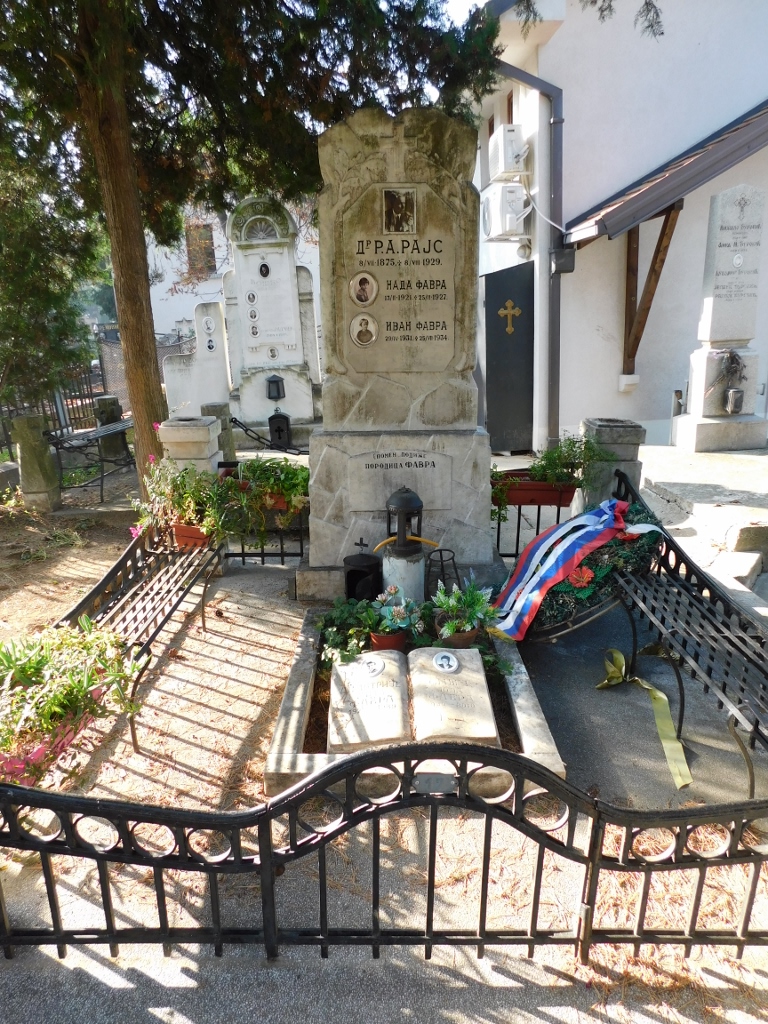 Grave of Archibald Reiss at Topčider Cemetery
Grave of Archibald Reiss at Topčider Cemetery
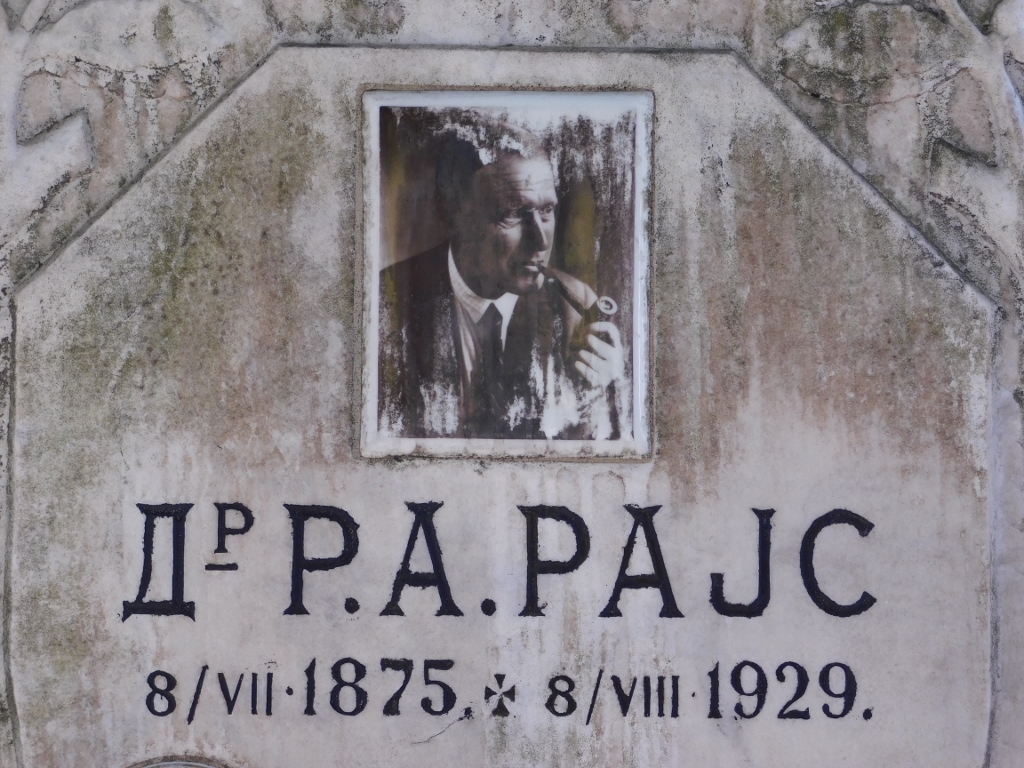 Grave of Archibald Reiss at Topčider Cemetery, a detail
Grave of Archibald Reiss at Topčider Cemetery, a detail
The next destination on this trip was also linked to a death – the site where an assassination was carried out. To start with, I entered by the car into the area of the Košutnjak park-forest. The name of this area has the word košuta as a basis and it means a hind, female red deer. During the reign of Prince Miloš, this is where the court’s hunting grounds were. At the time it was surrounded by a wooden fence, but from 1908 Košutnjak got the status of a national property and the fence was removed. Soon there were no more red deer and roe deer here. Nowadays, in addition to numerous hiking and recreational trails running through the forest, there are also narrow asphalt roads. They were laid down at the beginning of the 20th century and they have been kept and maintained ever since. For the most part, they are also narrow and one-way.
The site where I wanted to go can be reached by car, but I had not passed by it for a couple of decades (moreover, I walked there exactly 30 years ago). I remembered the places as completely overgrown in vegetation, while the road was narrow, so I was not sure I could park my car safely. That’s why I left the car at a parking lot at the foot of Košutnjak marked in the map and the three of us started to walk. I believe that the monument I wanted to visit can also be reached by one of the hiking trails, but I don’t know Košutnjak that well, so I led my friends along the road that I used to use, well, three decades before.
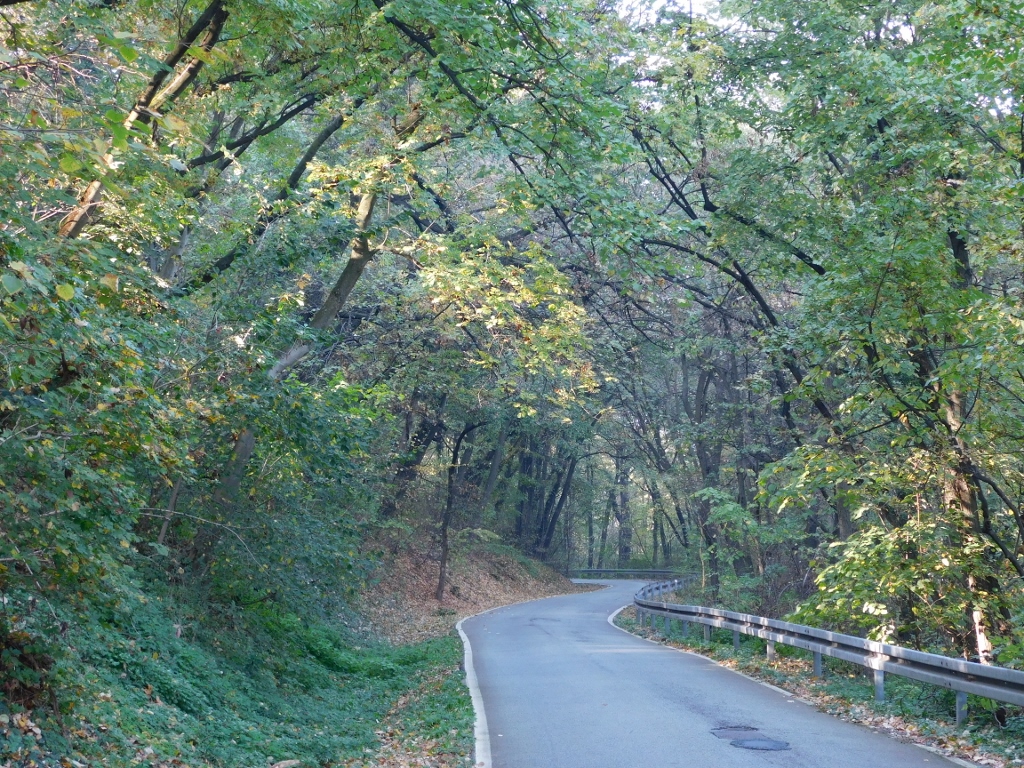 Road through Košutnjak
Road through Košutnjak
By the way, I have already mentioned that the roads in Košutnjak are mostly narrow and one-way. Under normal circumstances, there are no problems walking here. But, one has to be very vigilant, for there are all sorts of fools who think this is a great place for practicing rally racing and love to speed here. Most of the drivers are normal and careful, but there are exceptions. So, whoever goes here on foot must be watchful.
As we were walking, I saw for a short while and even managed to take a photo of a great tit (Parus major).
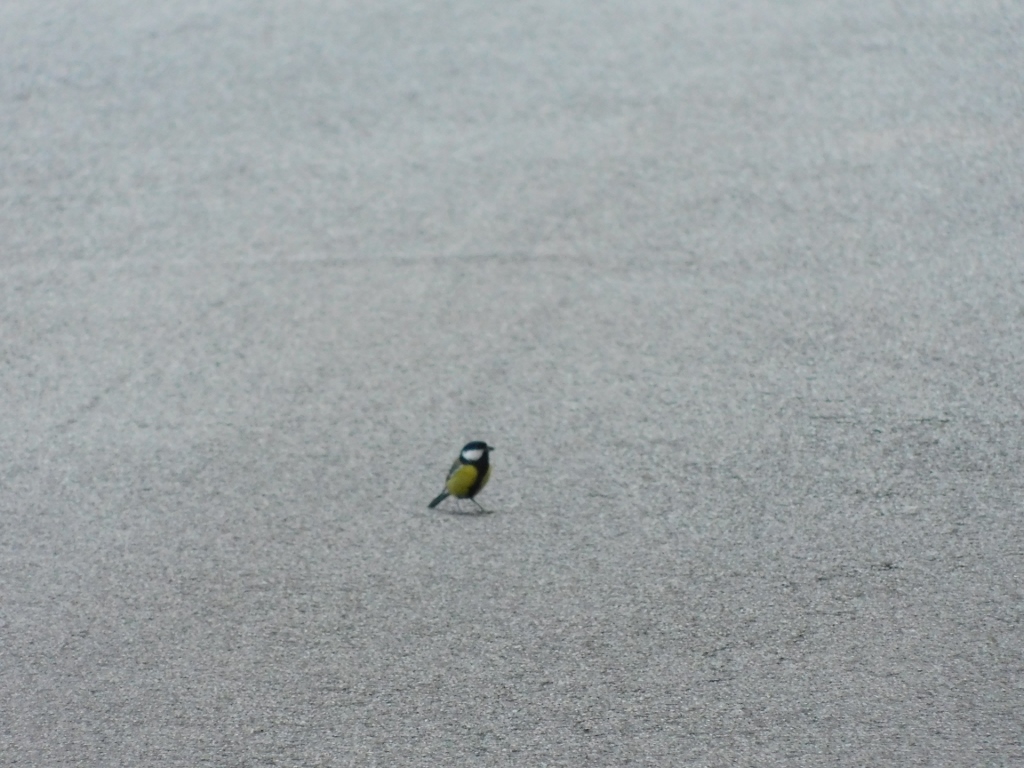 Great tit on the asphalt road
Great tit on the asphalt road
And then we reached the planned destination and as it turned out, in the meantime, it had been cleared off from the vegetation and quite nicely maintained.
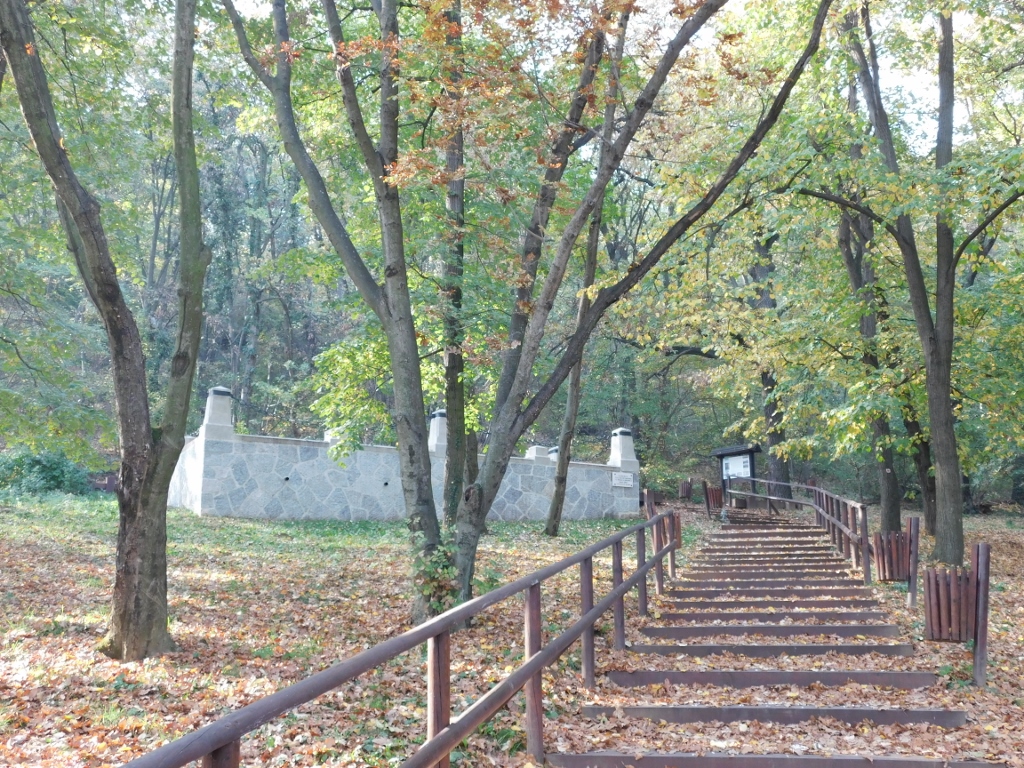 Monument in Košutnjak
Monument in Košutnjak
This is the exact spot where Prince Mihailo Obrenović (1839-1842 and 1860-1868) was assassinated. I have already mentioned him in the previous sequel of my story about the daily trip to some of the peripheral parts of Belgrade. He was the younger son of Prince Miloš Obrenović and, like his, father, he ruled on two occasions. Also, like his father, he had despotic inclinations (“an enlightened absolutist”) and so in 1868 a plot was made and during one of his carriage rides through Košutnjak the prince was killed right here.
The prince was born in 1823 and he spent the period between his two reigns mostly in Vienna where he married Hungarian Countess Júlia Hunyady de Kéthely. During his second reign, Prince Mihailo achieved significant success linked to the reduction of the Ottoman presence and influence in the country. He was well educated, spoke a couple of foreign languages and he also initiated the founding of the National Theatre in Belgrade.
The main walking street in Belgrade is named after him and although a lot of people say “Knez Mihajlova,” the name of this ruler is Mihailo; in other words it is spelled with an “i” and not with a “j.” As a memory to this ruler, in 1882, a monument to Prince Mihailo was erected in the present-day Trg Republike and that was the first public figural and the only equestrian monument in Belgrade. Prince Mihailo is buried at the Cathedral Church in Belgrade, just like his father, Prince Miloš Obrenović.
Right after the assassination of the prince there was an initiative for making a memorial at the site of the assassination, but the ideas about the look of the memorial changed over time only to get their final shape in 1912. This place of modest appearance belongs to Topčider as the spatial, cultural and historic ensemble, i.e., a cultural property of exceptional importance.
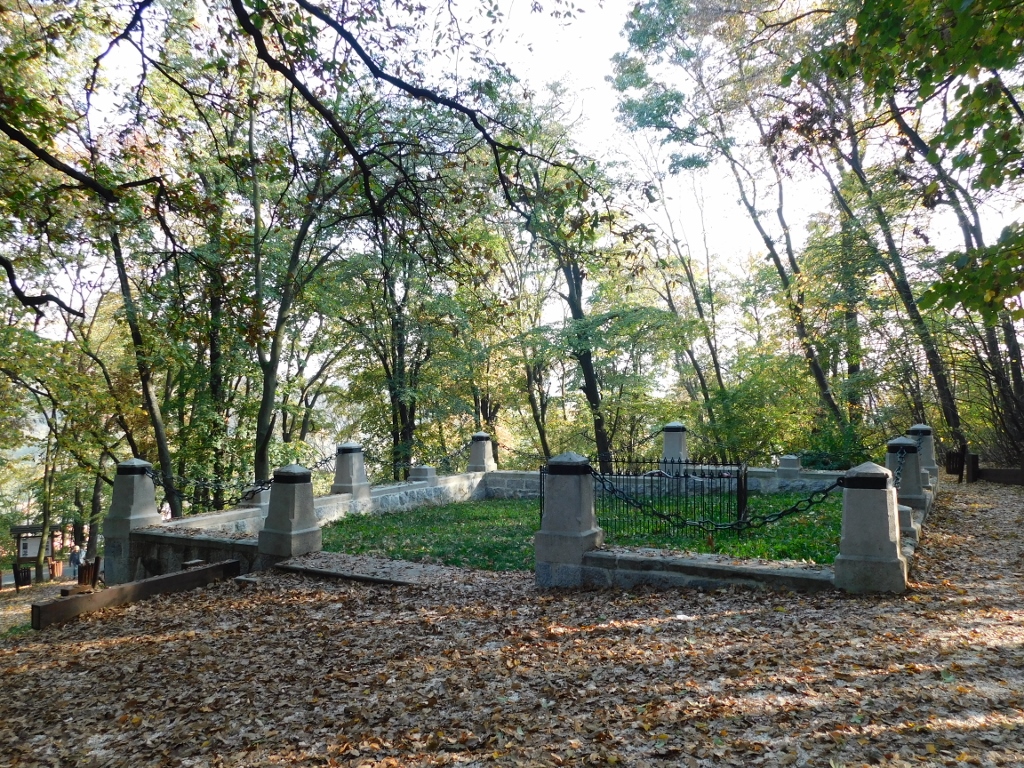 Memorial at the site of the assassination of Prince Mihailo Obrenović in Košutnjak
Memorial at the site of the assassination of Prince Mihailo Obrenović in Košutnjak
Here I also took advantage of a perimeter wall in order to take a photo of my friends, Kaća and Toma, and me.
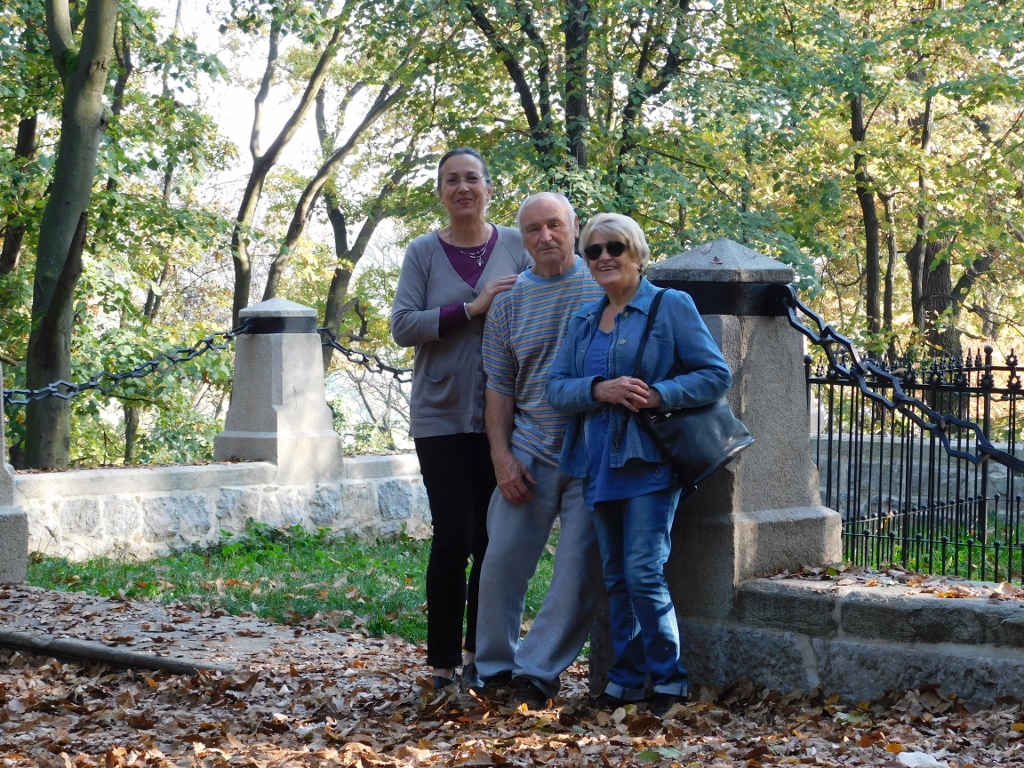 With friends in Košutnjak
With friends in Košutnjak
After this, I simply had to go to yet another site nearby which was actually the reason why I walked here multiple times 30 years before. Namely, back in the day, I did hiking intensively and because of my friends at the time who were interested in alpine climbing I decided to attend an alpine climbing course in Belgrade. Everybody who’s familiar with Belgrade must know that there are no high mountains and rocks around, but... Here and there, there are some lower rocks that are quite sufficient for grasping the most basic skills linked to alpine climbing. That year when I attended the course, the taking of the test was organised on mountain Stol near Bor, Serbia. By the way, I actually never did any alpine climbing, although I apparently exhibited certain talent and skills during the course. I didn’t even go to take this test, since instead of going there I attended a wedding. The instructors already had a “diploma” ready for me, but I was never really attracted by alpine climbing and so the whole thing ended like this – with no sequel. And yet, during this stroll in November 2022 I wanted to revisit the place that served as the alpine climbing practice ground.
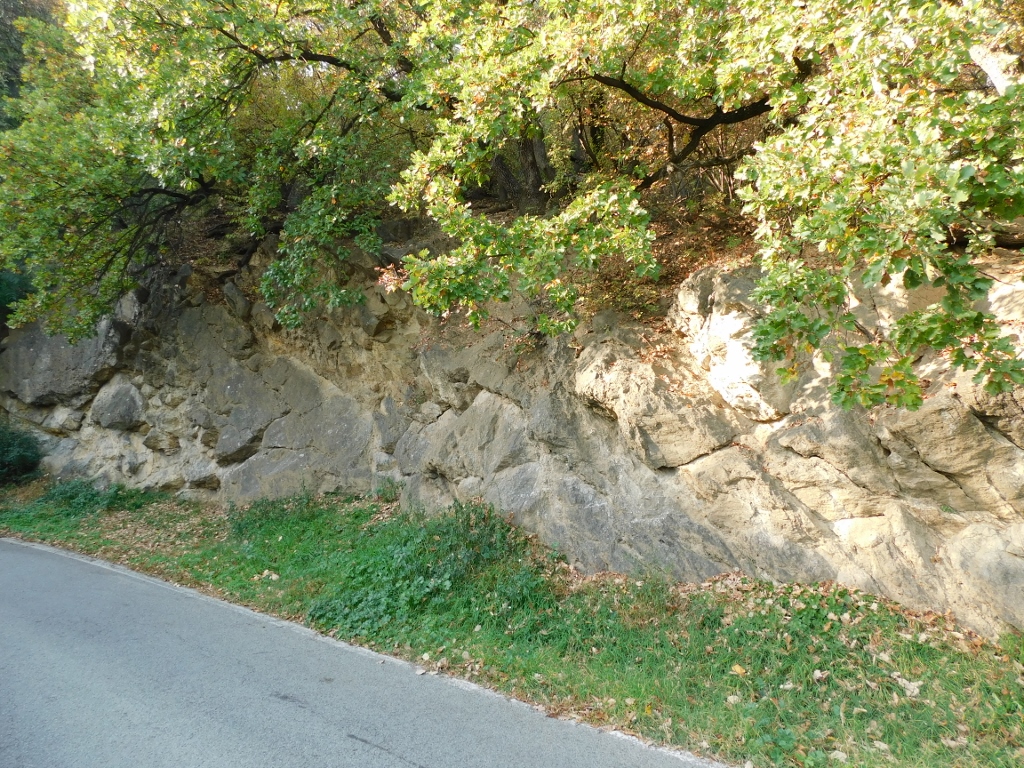 The rock where we practice free-style traversing – 30 years ago there were fewer trees
The rock where we practice free-style traversing – 30 years ago there were fewer trees
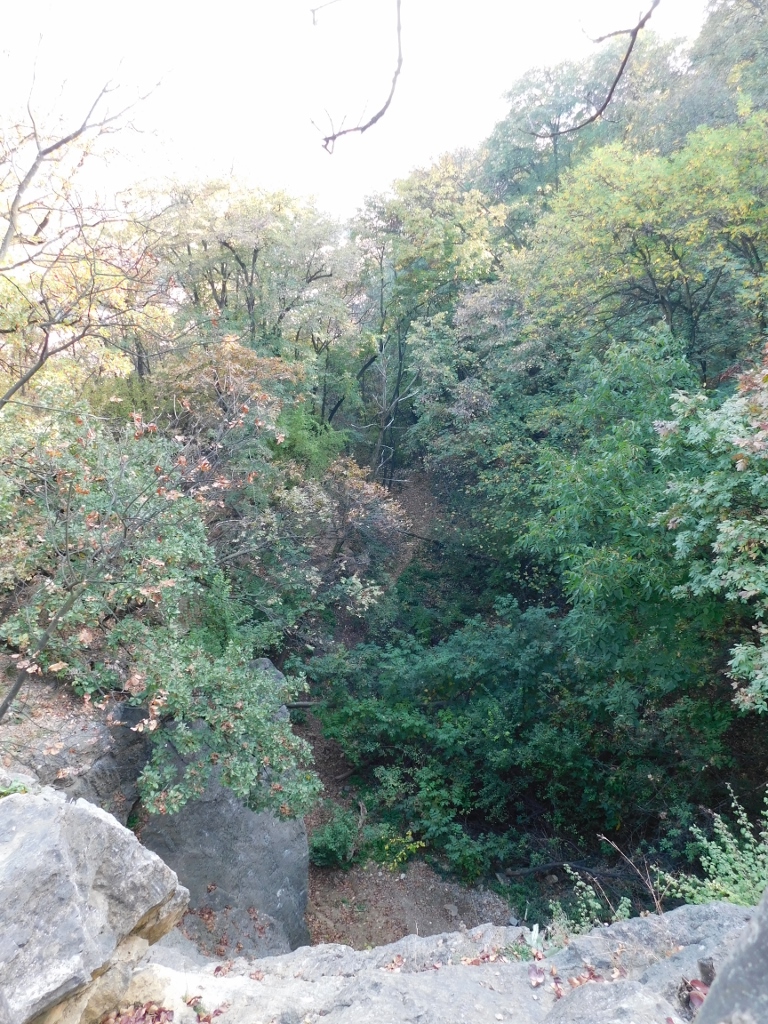 “Hole” from which we climbed to the top along the minute sheer cliff
“Hole” from which we climbed to the top along the minute sheer cliff
All of this may not seem impressive at all, but my memories of the time and my “practicing” of alpine climbing are very positive and filled with content – I had a blast! And so, I found my old photos that I had digitalised in the meantime and when I look at them now, I still have fun.
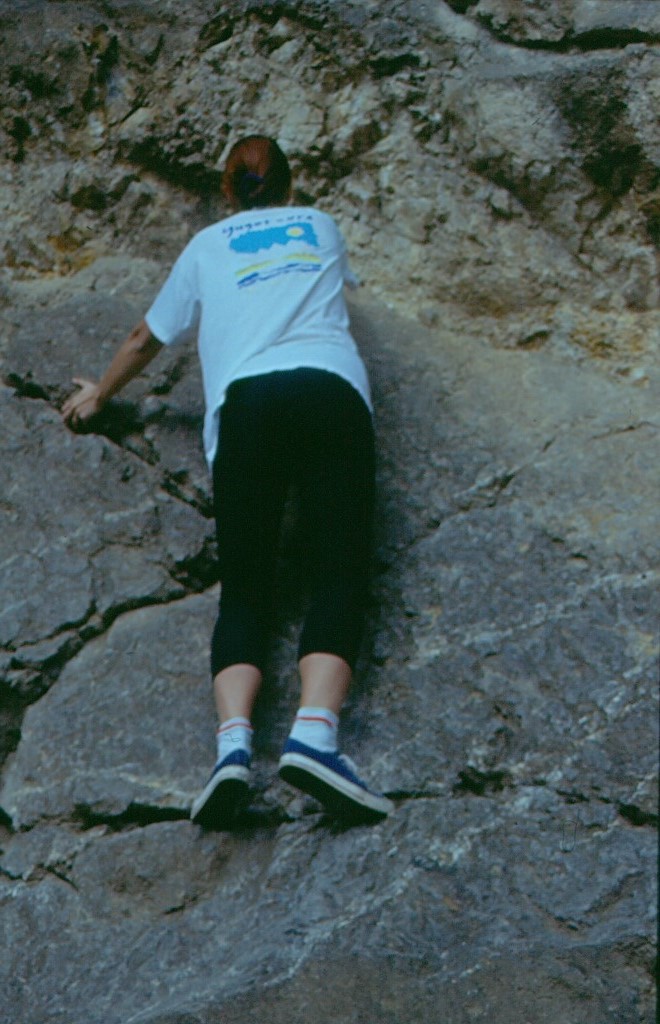 Free climbing of a rock without any gear 30 years ago
Free climbing of a rock without any gear 30 years ago
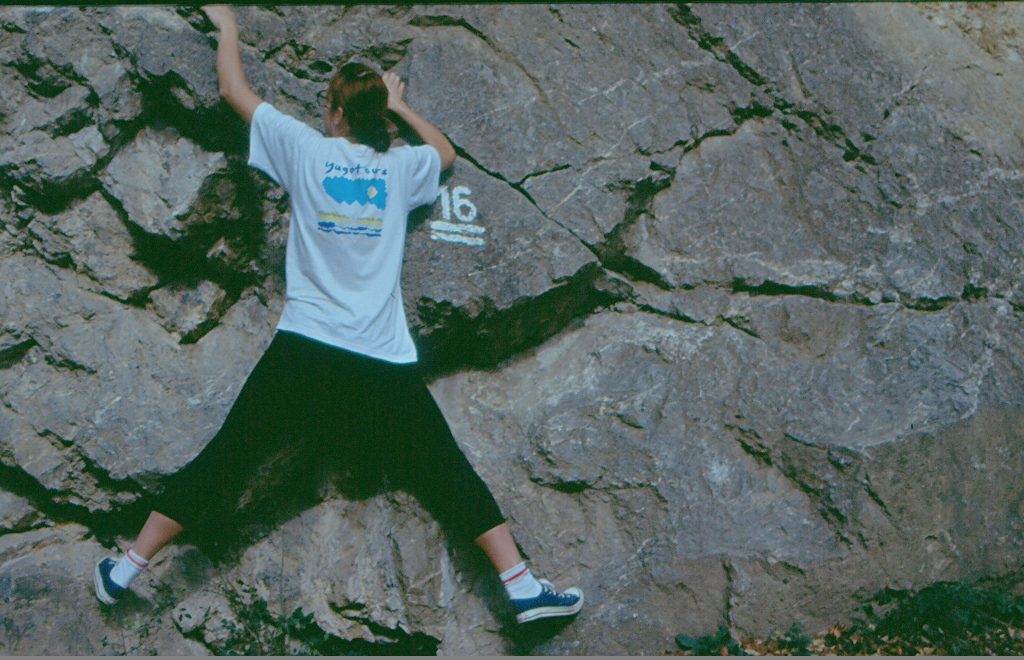 Traversing a rock without the gear 30 years ago
Traversing a rock without the gear 30 years ago
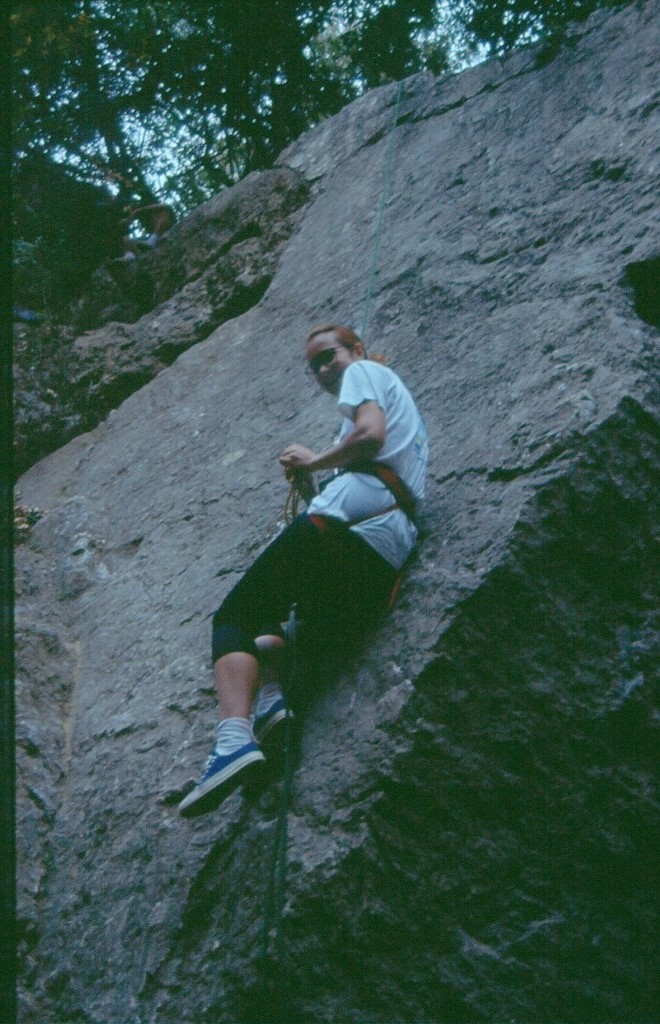
Hanging by the cliff with the gear 30 years ago
After this reminiscence of my youth, I returned to the car with Kaća and Toma. A couple of hundred metres from the parking lot at the east foot of Košutnjak, following the road going up, there is yet another interesting site and that is Hajdučka česma or Hajduks’ Fountain. It is one of the oldest fountains in Belgrade with spring water.
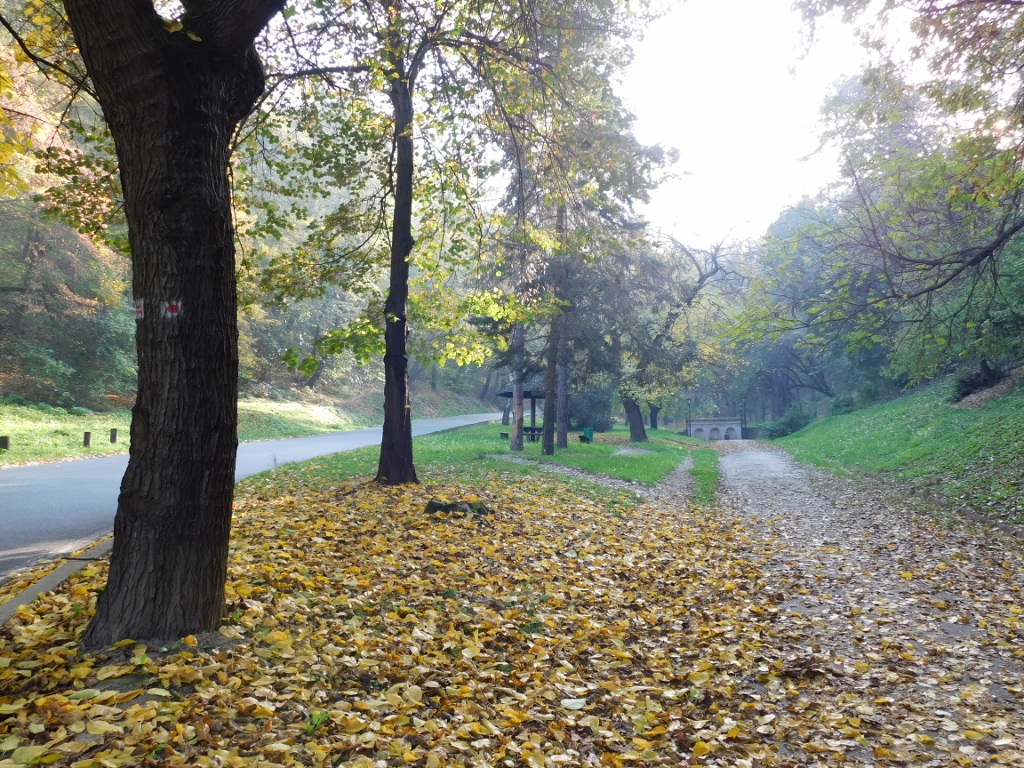 Access to Hajdučka česma
Access to Hajdučka česma
It is not known when a fountain was first built here, but it is presumed that this took place at the end of the 18th century. Also, the origin of the name (hajduk means a guerrilla fighter during the Ottoman period) remains unclear. The fountain got its present shape only later and the water here used to be quite good for drinking. But, not any longer. The City Institute for Public Health of Belgrade regularly (twice a month) tests the water of the public fountains and when I was writing this text, their site showed the results from September 2022 – no, the water was not safe to drink.
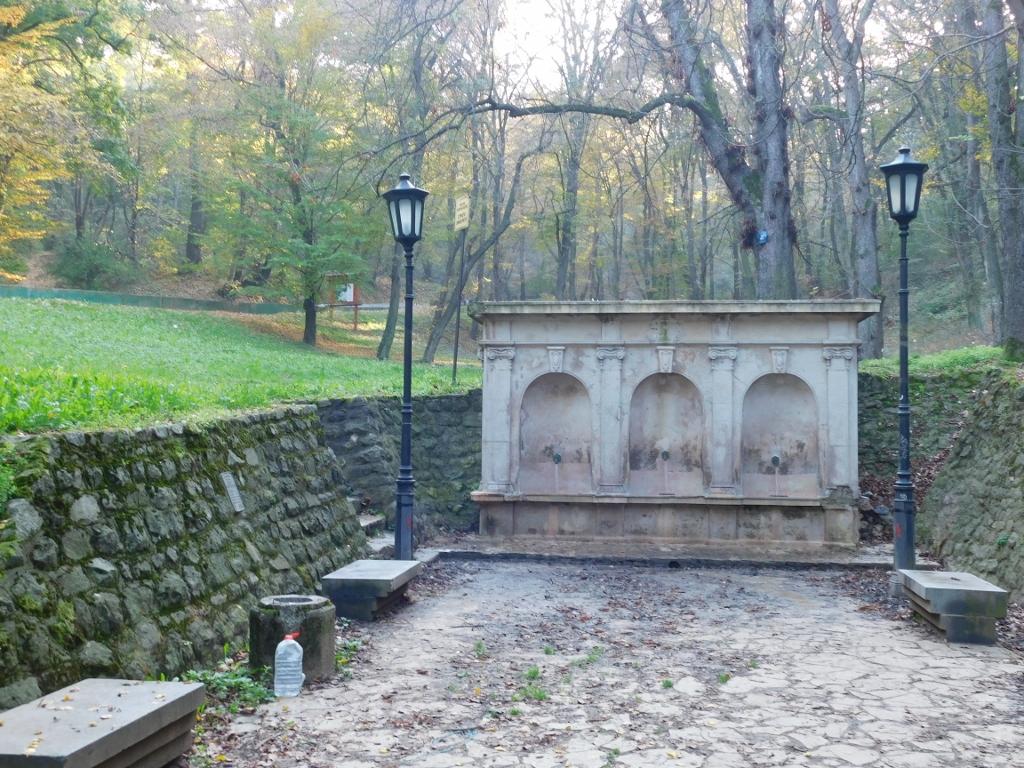 Hajdučka česma
Hajdučka česma
But, this place, or rather its surroundings, is also known for one of the most famous rock concerts in ex-Yugoslavia during the 1970s – “Concert at Hajdučka česma” of “Bijelo dugme” band, which was held here in 1977. The leader of the band was Goran Bregović, an internationally known musician and composer. It was a free concert in open air and it is estimated that it was attended by between 50,000 and 100,000 fans.
In November 2022, the park around the fountain was very quiet.
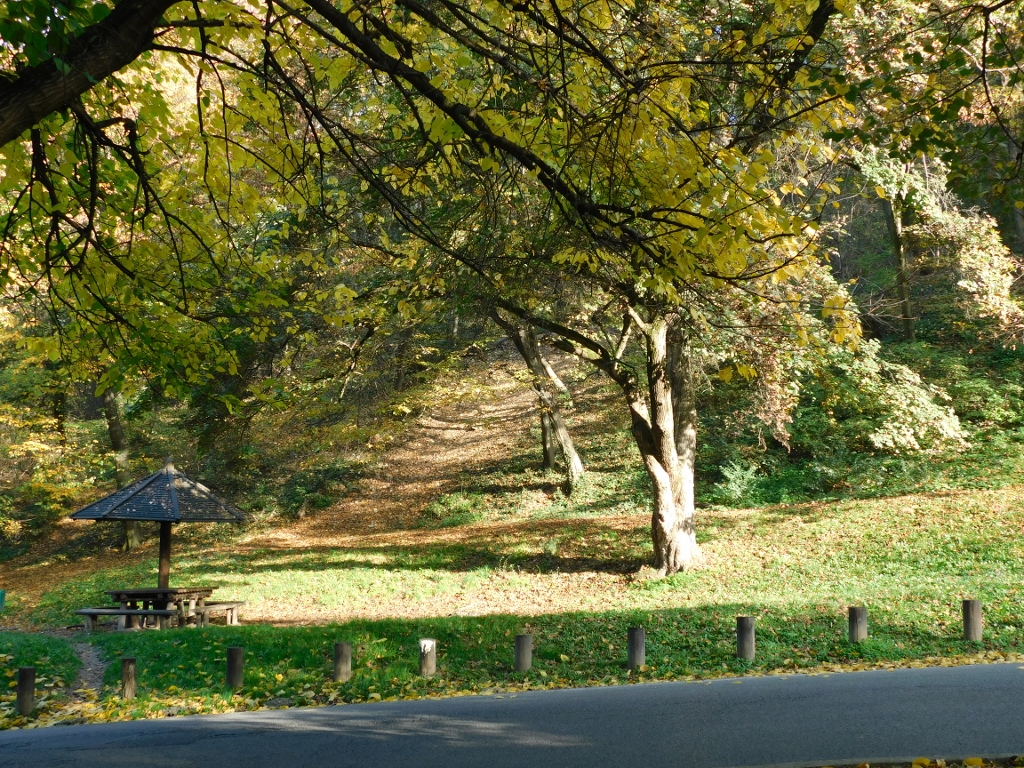 Košutnjak at Hajdučka česma
Košutnjak at Hajdučka česma
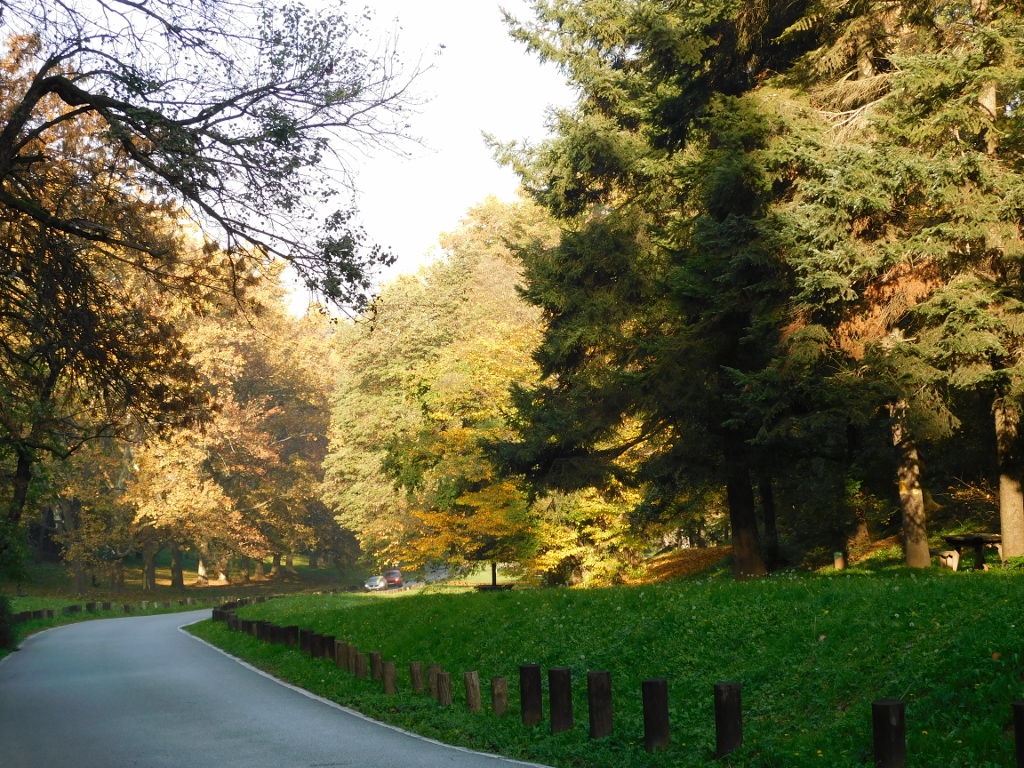 Košutnjak at Hajdučka česma
Košutnjak at Hajdučka česma
When I went on a daily trip with Kaća and Toma the last time (https://www.svudapodji.com/en/south-of-belgrade/), I got too immersed into my sightseeing plan and in the end we had no formal lunch. Now I decided to rectify this and so the three of us went for a lovely lunch at a well-known restaurant in Košutnjak. This was a fine and tasty experience, but although we did not stay there for too long, it became clear to me that on this day we would not manage to visit everything that I had in my plans. That was not the reason not to go to our next destination which was Rakovica Monastery, categorised as a cultural property of great importance.
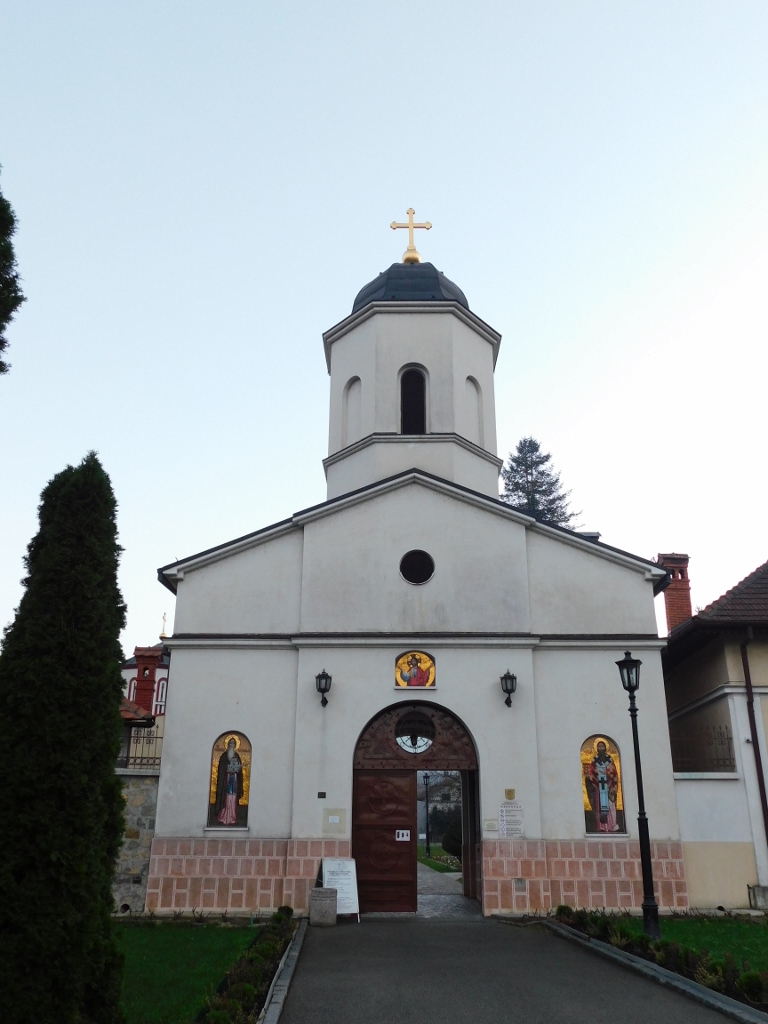 Rakovica Monastery, the entrance
Rakovica Monastery, the entrance
Rakovica Monastery was built in the 16th century in the valley of the Rakovička reka and it contains a church dedicated to the Holy Archangels.
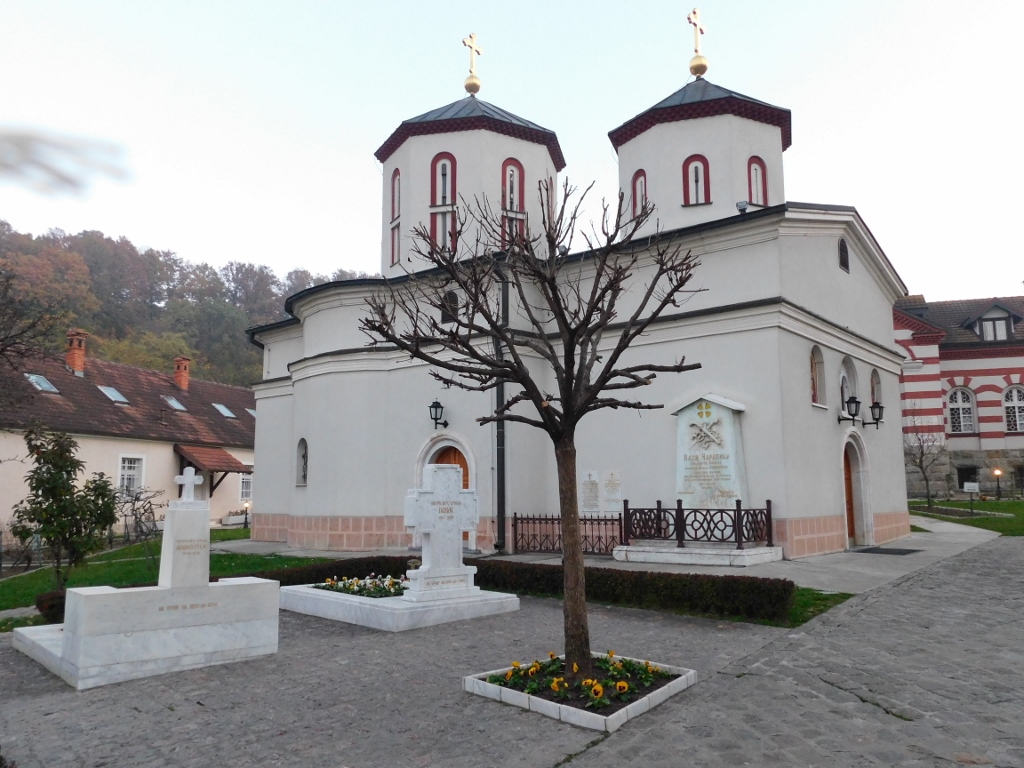 Rakovica Monastery, the Church of the Holy Archangels
Rakovica Monastery, the Church of the Holy Archangels
It was destroyed and restored several times, but it got its current appearance during the 1861-1865 restoration thanks to the Obrenović family – Prince Miloš and Tomanija, the wife of his brother Jevrem. By the way, a street in downtown Belgrade, Gospodar-Jevremova, has been named after this brother of Prince Miloš.
The church was closed, so I could look at it only from the outside. It has a triconch (trefoil) ground plan and two octagonal domes. At the north exterior wall of the church, at the level of the narthex, there is a monument erected above the grave of Vasa Čarapić (1768-1806), a famous military leader from the First Serbian Uprising. I have already written about him (https://www.svudapodji.com/en/belgrade-21/).
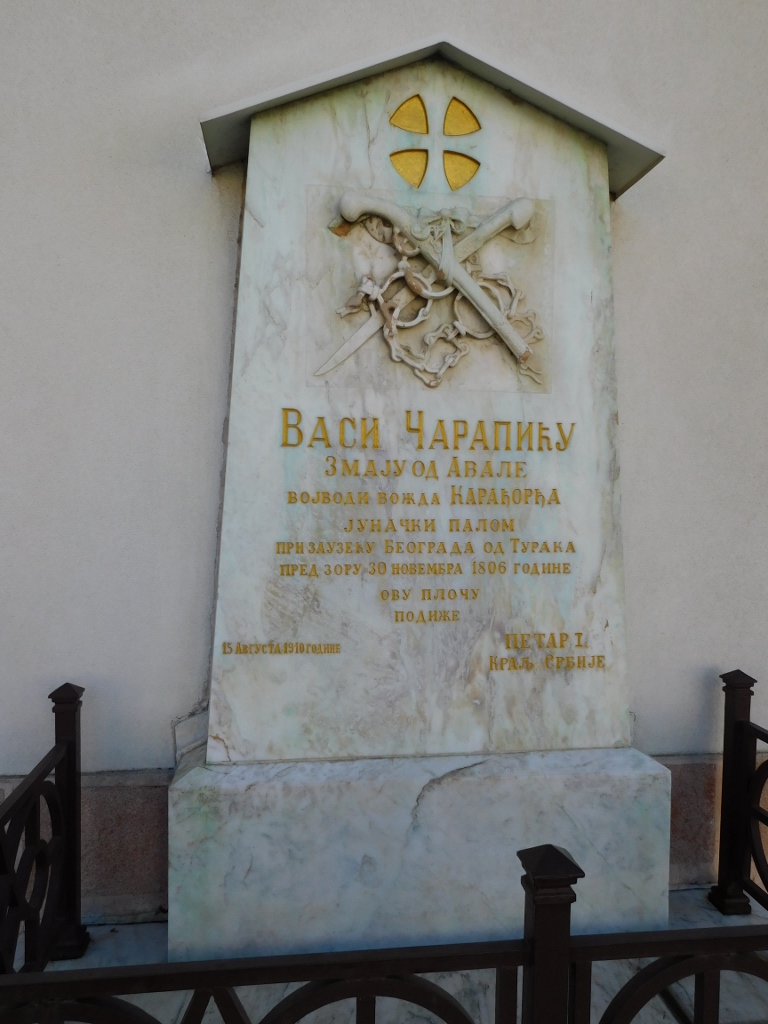 Rakovica Monastery, Vasa Čarapić’s grave
Rakovica Monastery, Vasa Čarapić’s grave
Beside the north wall of the church, one can also see two more graves (they can be seen in the photo with the church). One of them is the grave of Serbian Patriarch Dimitrije (1846-1930) who was the head of the Serbian Orthodox Church from 1920 to 1930. The other one is the grave of Serbian Patriarch Pavle (1914-2009) who was the head of the Serbian Orthodox Church from 1990 until 2009.
When Patriarch Pavle passed away, there was first a procession in Belgrade with the casket of the patriarch that went along the central streets of the city reaching the Church of Saint Sava where the memorial service was held. I cannot recall ever seeing more people in the centre of Belgrade than on that day and, according to some estimates, there were around 600,000 people. Patriarch Pavle had always been held in the highest regard among the people and one of the traits that was always linked to him was his modesty.
Having this in mind, let me mention that nine years after the death of the patriarch, a monument to him was erected in the Tašmajdan Park in Belgrade, in front of the Church of St. Mark. I did not follow the events linked to the installation of this monument, but later I found out that it was a subject of major criticism and discussion. When I first saw the monument, it was immediately quite clear what it showed – precisely the humility, calm, immersion in one’s thoughts and that well-known modesty of the beloved patriarch. Namely, he was well known for regularly taking tram on his way to the Patriarchy offices. I think we can all agree that there are very few people of any stature that take public transportation and I believe that this is worth great respect, primarily as a reflection of modesty and, in the case of the spiritual leader of a nation, as a reflection of the “life with the people” and not rising above them. The monument in the Tašmajdan Park shows the silhouette of the patriarch while “sitting” on an invisible and suggested tram chair. No throne or enormous statue of the patriarch would reflect the essence of this man better.
But, let me go back to my visit to Rakovica Monastery. Although of modest appearance and the relatively short duration in its restored shape from the 19th century (a part of the exterior wall was damaged during the NATO bombing of 1999), the monastery has always had great reputation and this may also be seen by the graves of important historical figures. In addition to the ones already mentioned, I would like to say something about another grave.
This is the grave of Sebastijan (1839-1917) and Antonija Roš (1852-1940).
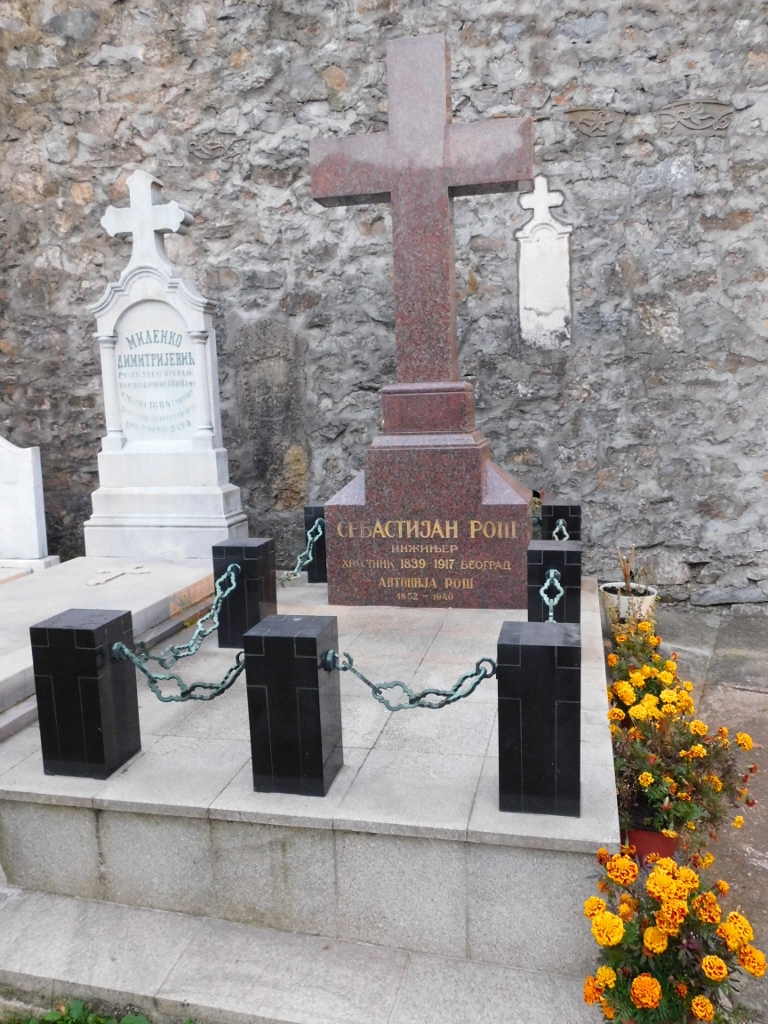 Rakovica Monastery, the grave of Sebastian and Antonija Roš
Rakovica Monastery, the grave of Sebastian and Antonija Roš
I must admit that I don’t know much about them. Moreover, I only know that they came to Belgrade and Serbia from Slovenia and that Sebastijan Roš was an engineer, an expert for the construction of railways. But, I came here because of the respect for their son – Đorđe Roš. I’m sure that most of the Serbs have never heard of this man. Neither had I until spring 2022 and when I did hear about him I was so impressed that I had to come to the grave of his parents. I have already suggested something about Đorđe Roš in my text about Čačak where I spoke about the house of Major Gavrilović, a hero of WWI (https://www.svudapodji.com/en/cacak-ovcarbanja-3/).
So, as a grammar school student, Đorđe Roš (1896-1977) was a volunteer in the Second Balkan War (1913). A couple of years later (1915), he took part in the defence of Belgrade under the command of Major Gavrilović and there are even suggestions that Major Gavrilović never gave his famous speech, but rather that it was invented later by none other than Đorđe Roš. At the end of WWI, Đorđe Roš became a military pilot and was one of the pioneers of the Serbian aviation. Between the two world wars he developed private business with his brother Dušan and he also married a Norwegian woman he met in Vienna. The two of them got married in 1924 precisely at Rakovica Monastery. I presume that Mrs. Roš had to convert to Orthodoxy and she certainly changed her Norwegian name to – Ljubica (a very typical Serbian female name).
At the end of WWII (1944), he emigrated with his family since he had learned that he was on the hit-list of the new authorities and after a lot of wandering he settled in Buenos Aires, Argentina, in 1948. But only until 1960, when the whole family moved to Germany.
In 1961, he visited Mount Athos, Greece, and at the time (Serbian Orthodox) Hilandar Monastery was in a very bad shape. Đorđe Roš got activated and started to work on the restoration of the monastery and also with Prince Tomislav Karađorđević, within the Committee for the Monastery Restoration, he collected donations around the world in order to help the monastery regain its old glory, so to speak.
Working on the restoration of the monastery, Đorđe Roš went there often and so it happened that in 1977 he passed away precisely on his way to Hilandar. It was his wish to be buried at Rakovica Monastery, in the tomb where his parents were, but this was impossible at the time, since the authorities still did not look at him favourably. That’s why the grateful monks buried him in the monastic cemetery of Hilandar and he is the only person buried there who was a “civilian,” i.e., who was never a monk.
I learned about this very interesting story when I was researching data linked to Čačak and the house of Major Gavrilović and ever since then I wanted to come to Rakovica Monastery and to look for the grave of his parents, which I did on this occasion.
Now, however, it was starting to get dark and so Kaća, Toma and I left the monastery and headed for the car. Along the way, we passed by a fountain built in front of the entrance to the monastery yard in 1888.
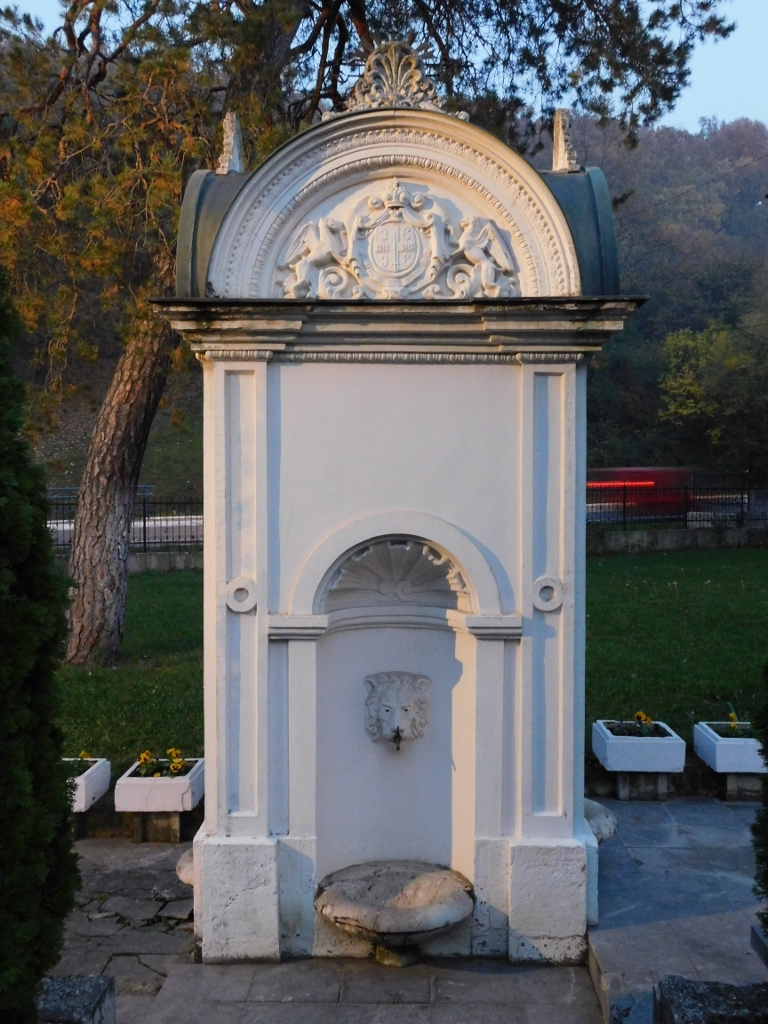 Rakovica Monastery, fountain in front of the monastery
Rakovica Monastery, fountain in front of the monastery
The trip was over for the day, but originally my plan was to cover yet another destination. This is quite feasible in principle, but one needs to leave earlier and the day needs to last longer than in November. That’s why I decided, a week later, when there was still some fine weather, to go again and complete the daily trip.
Still, since I was passing by Rakovica Monastery anyway, I decided to stop by in order to take some new photos under the morning sun.
It needs to be mentioned that in order to enter the monastery, the visitors must be dressed decently – among other things, men must wear long pants, while women must have a skirt and a scarf over their head. I don’t know how the situation is resolved in the case of men during summer, but as far as women are concerned, at the entrance into the monastery one can get aprons and headscarves. I had my shawl for the head, but I did take an all-round apron. There were no problems any longer and I could walk around the yard for a short while.
By the way, the church was closed again, so I did not visit it.
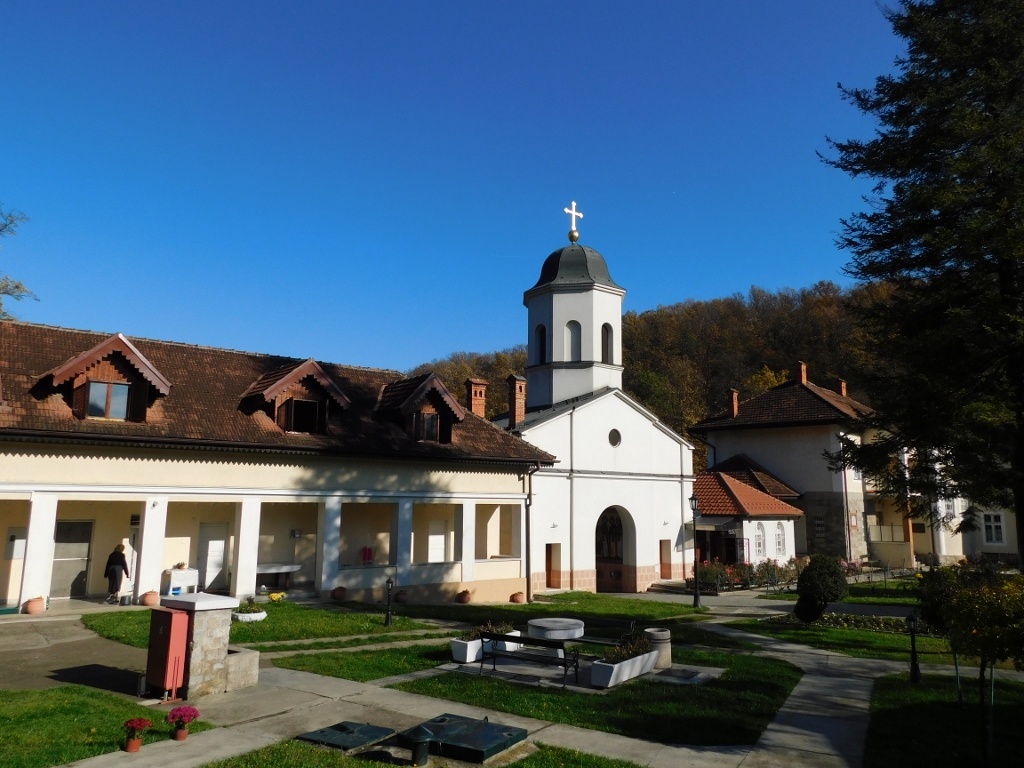 Rakovica Monastery, entrance as seen from the yard
Rakovica Monastery, entrance as seen from the yard
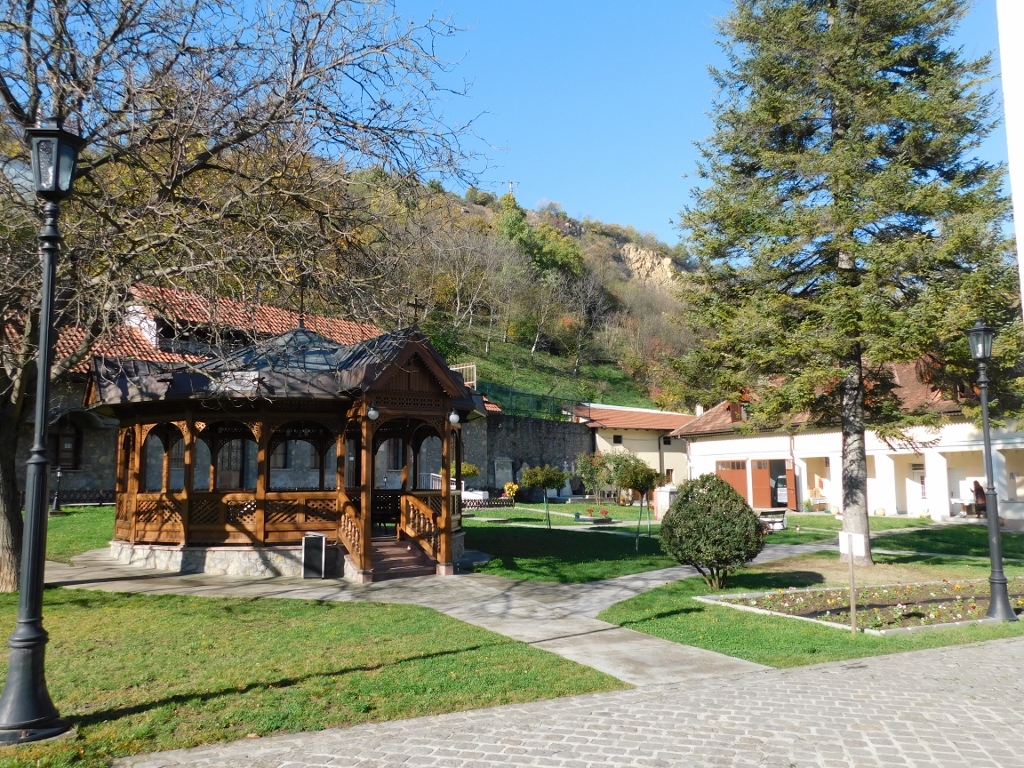 Rakovica Monastery, monastery yard
Rakovica Monastery, monastery yard
The photo above also shows where the grave of Sebastijan and Antonija Roš is. It is located adjacent to the support wall seen in the middle of the photo, in the background, “supporting” the slope of the hill. That place can also be seen in the photo below (in the direction of the tree in the middle of the photo) that shows the graves of two patriarchs.
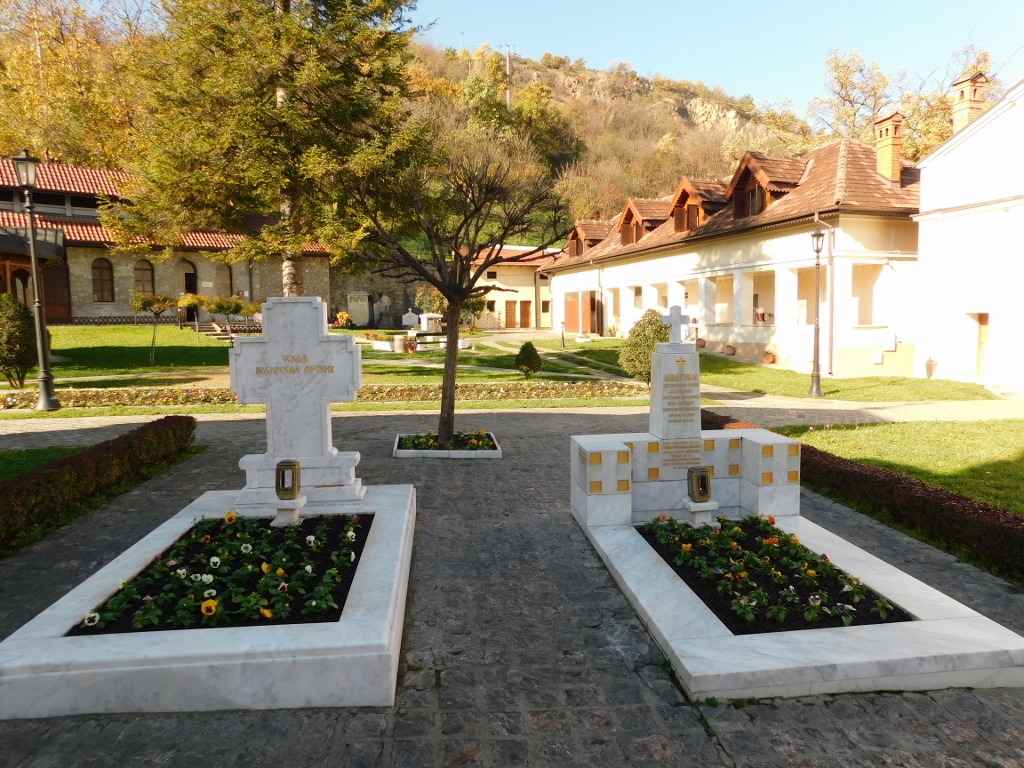 Rakovica Monastery, graves of the patriarchs
Rakovica Monastery, graves of the patriarchs
On the other side of the street that runs beside Rakovica Monastery, one can see yet another interesting structure. This is the fountain of Saint Paraskeva of the Balkans.
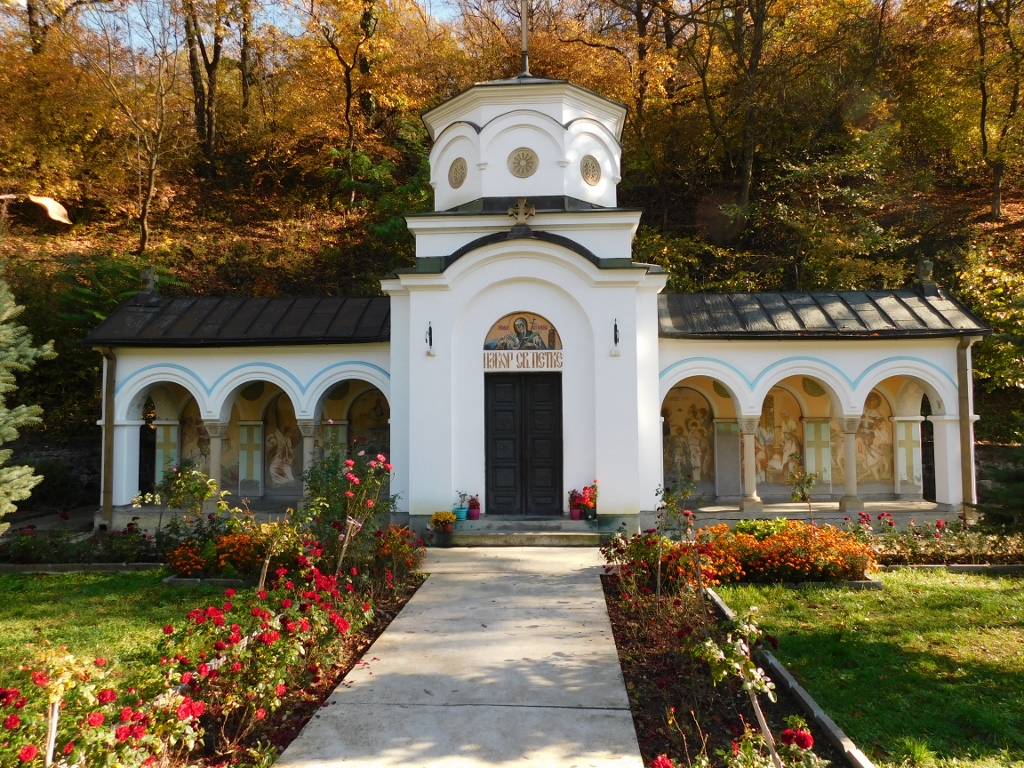 Rakovica Monastery, Saint Paraskeva of the Balkans fountain
Rakovica Monastery, Saint Paraskeva of the Balkans fountain
According to the data of the City Institute for Public Health of Belgrade from September 2022, the spring water from this fountain was safe to drink and there are also lots of stories about the healing properties of the water from this fountain. Still, it was closed when I arrived there. Perhaps I could have opened the gate, but I thought I did not ask anybody and then I didn’t even feel comfortable trying to get in.
On the other hand, I was not thirsty and I had a special plan anyway to go for a coffee at my dear friend’s, Bilja, who lives in Resnik and who actually showed me a year and a half before the last destination on this trip, which was Lake Pariguz.
Being with Bilja was just as always – great and never enough. Bilja had her own obligations and I wanted to go to the lake and make a circle around it.
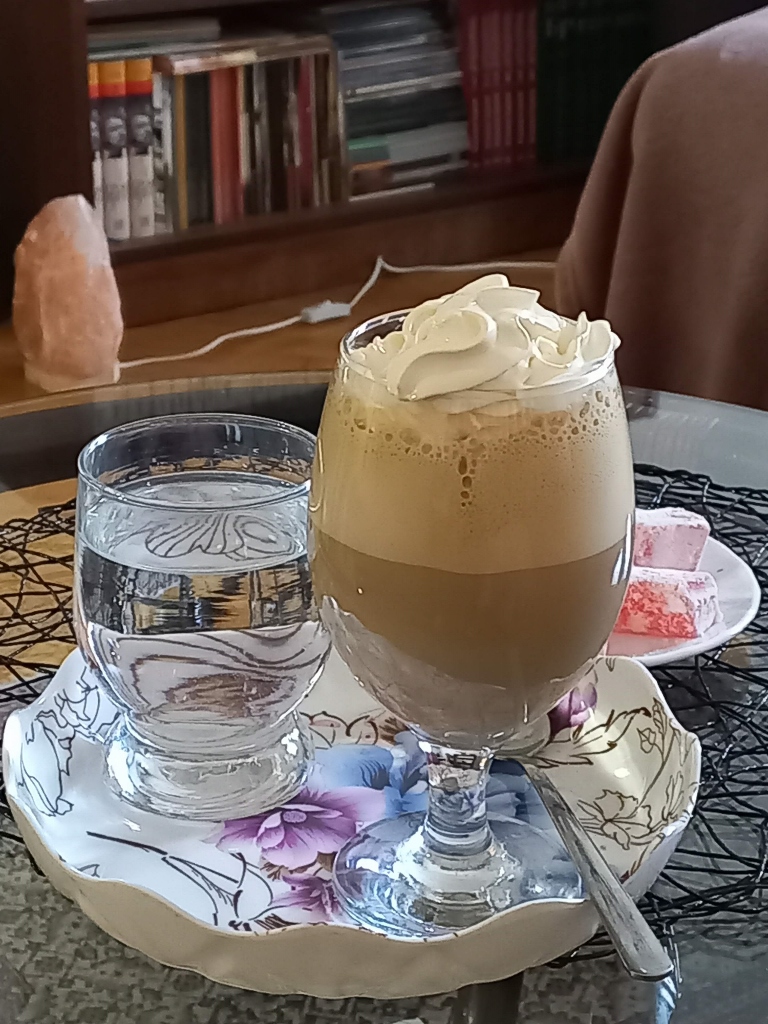 Coffee at my friend’s
Coffee at my friend’s
As far as the reservoir lake Pariguz in Resnik is concerned, it is often referred to as Resničko jezero (Resnik Lake), but the first name is significantly more interesting and fun. Its literal translation would be something like: buttocks steamer.
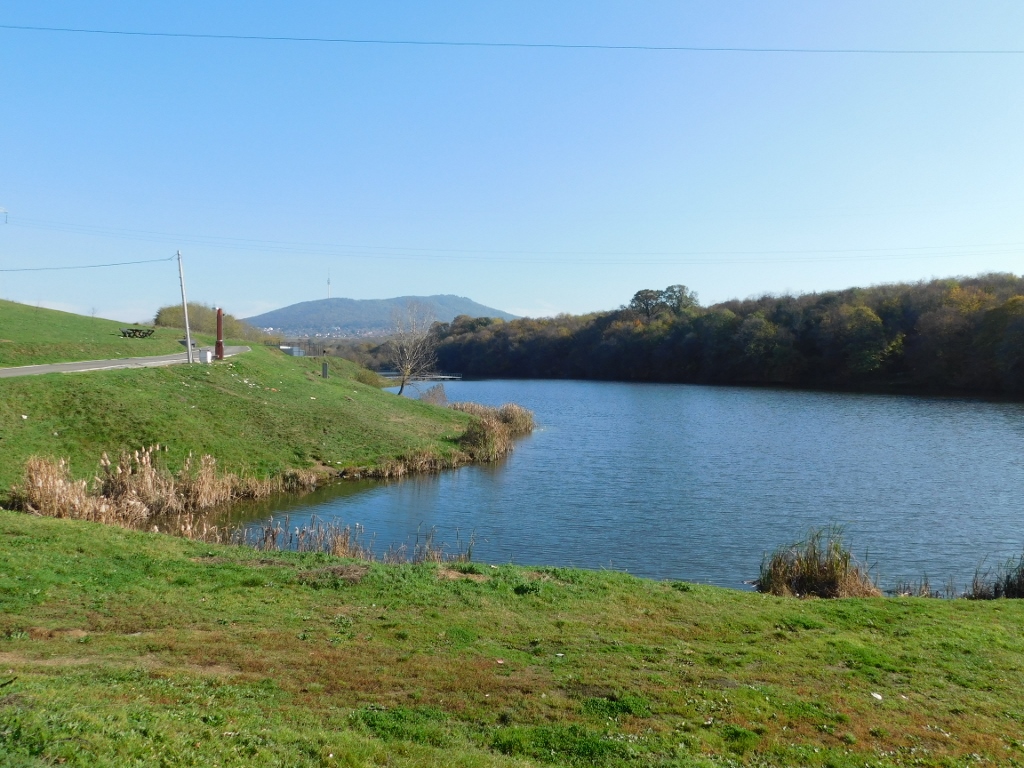 Pariguz Lake in Resnik; you can see mount Avala and the Avala Tower in the distance
Pariguz Lake in Resnik; you can see mount Avala and the Avala Tower in the distance
There are two legends linked to the origin of the name. According to one of them, here in the valley of a stream there was healing mud which was, apparently, used even by ancient Romans for treating haemorrhoids. According to the other legend, during the First Serbian Uprising, a group of Serbs made some Ottomans run away from here and then they used buckshots against their bottoms. Be as it may, the picturesque name has survived, but, for instance, the official documentation refers to the lake as Resničko. On the other hand, on the internet, the Google map clearly says – Pariguz Lake.
 Pariguz Lake
Pariguz Lake
The lake was created at the end of the 1980s, because there used to be a problem with three local streams that flowed down this valley since they regularly flooded the downstream areas in spring. For this reason, a dam was made and today one can walk over it nicely, while the water from the lake is released through a concrete canal seen in the previous photo on the left-hand side.
On the top of the dam which is covered in grass, there is also a nice place for sitting.
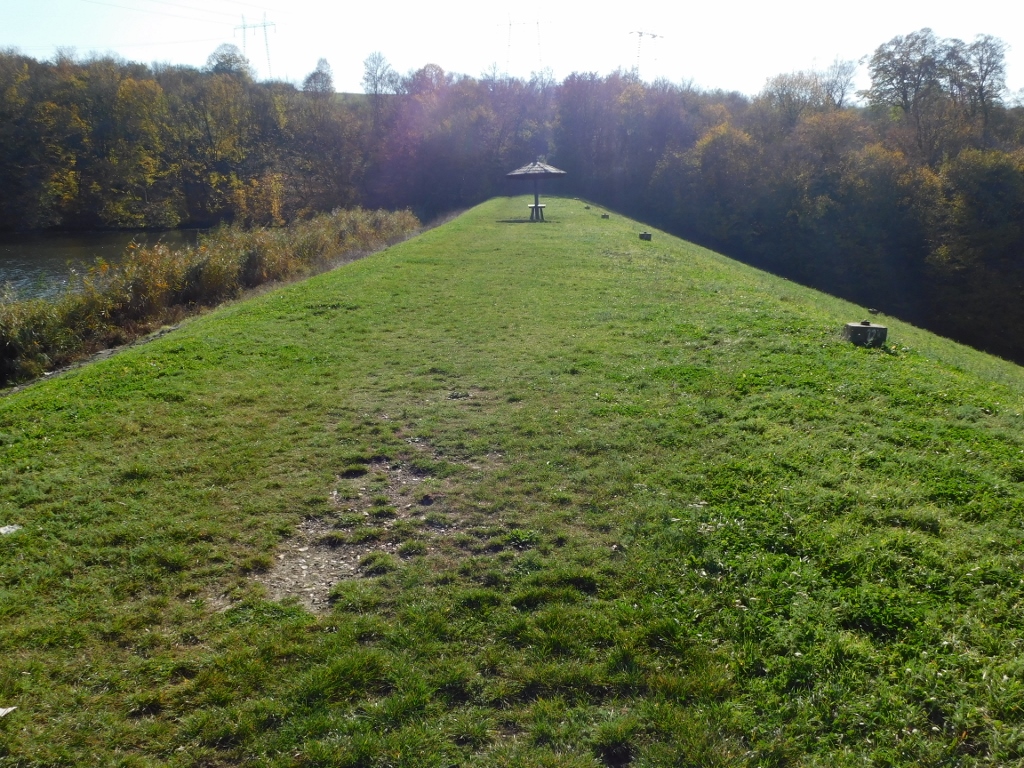 Pariguz Lake: top of the dam
Pariguz Lake: top of the dam
The lake is 700 m long, 120 m wide and its depth goes from 12 to 18 m depending on the data you come across. When Bilja first brought me here, it was summer and incredibly hot, so we did not stay around for too long. On this day, however, I decided to make a full circle around the lake. Before moving to the other side of the lake walking over the dam, I noticed on the north side a man with a flock of sheep. Well, it was almost as if I had gone far away from the city, while I was merely some 15 km away from downtown Belgrade.
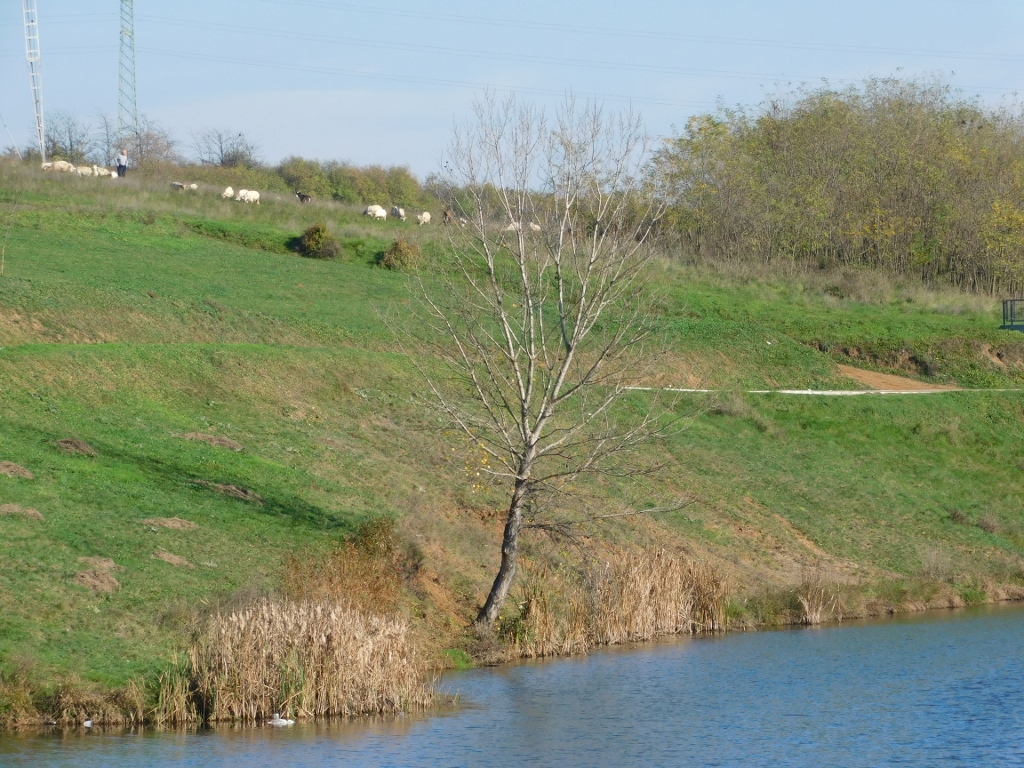 Pariguz Lake: a man with sheep in the distance
Pariguz Lake: a man with sheep in the distance
The north, sun-lit side of the lake appears tamer and it is closer to the residential areas, while on the south, shadowed side, there is a forest, with fields behind it. There is not a formally developed trail, but you can generally see a beaten path rather clearly, so the visitor cannot get lost.
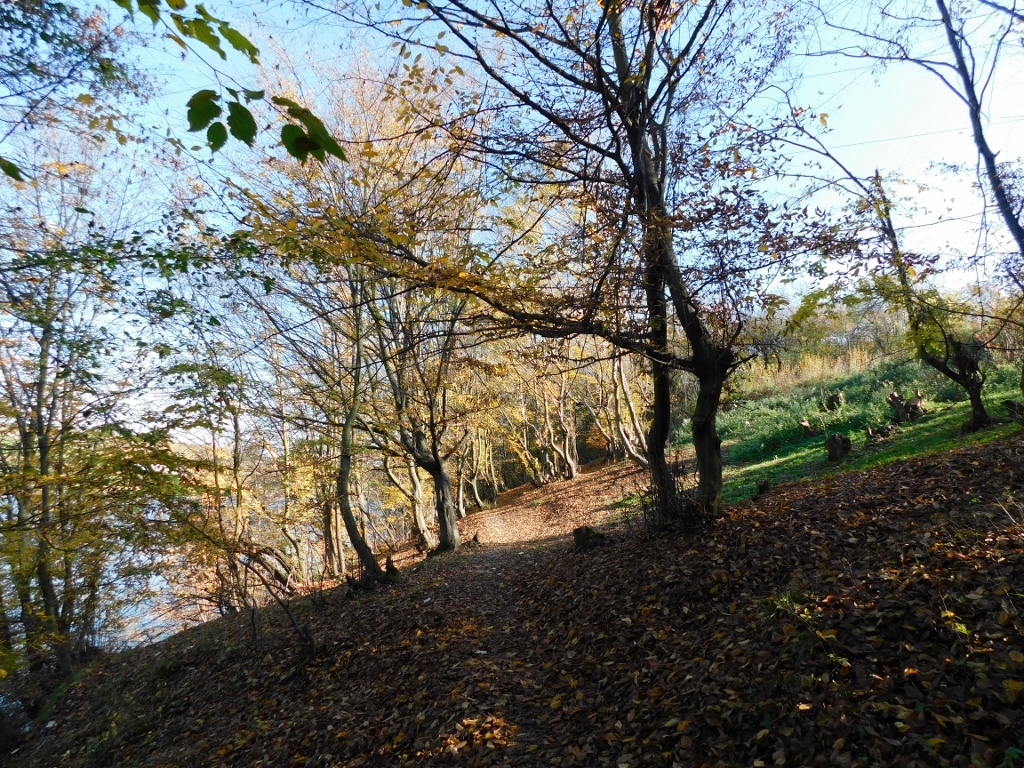 Pariguz Lake: beginning of the path leading through the forest
Pariguz Lake: beginning of the path leading through the forest
Occasionally the path is steep, in some sections it is closer to the lake and in one particular place I had to squeeze under the trunk of a fallen tree. I did not mind it in the least.
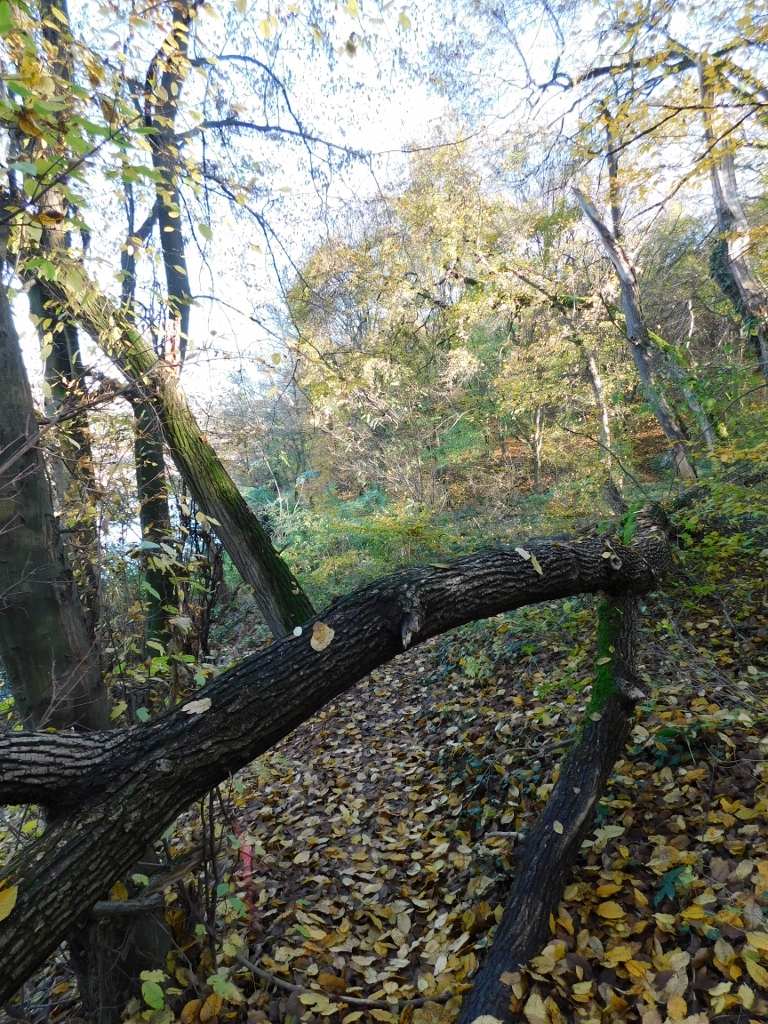 Pariguz Lake, a detail
Pariguz Lake, a detail
What was a little awkward in November was the fact that the path was covered by fallen leaves underneath which there was moist ground and I worried lest I slipped. I did not, since I treaded very carefully, but I could also enjoy some other details of the nature in a couple of spots.
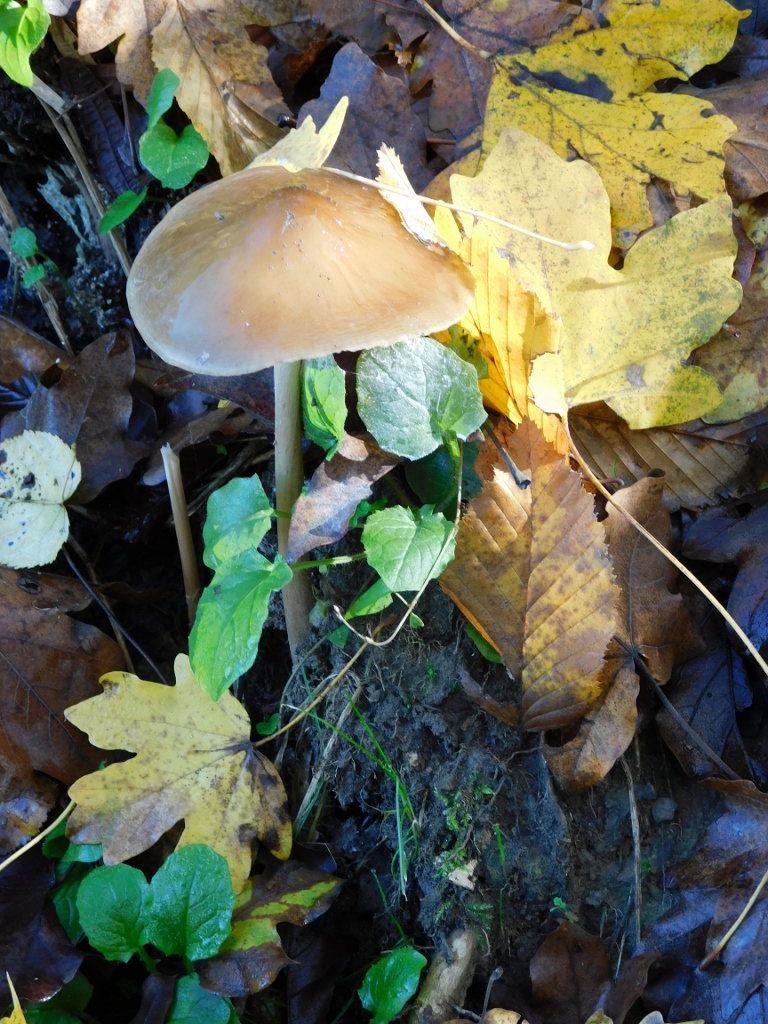 Mushroom along the path
Mushroom along the path
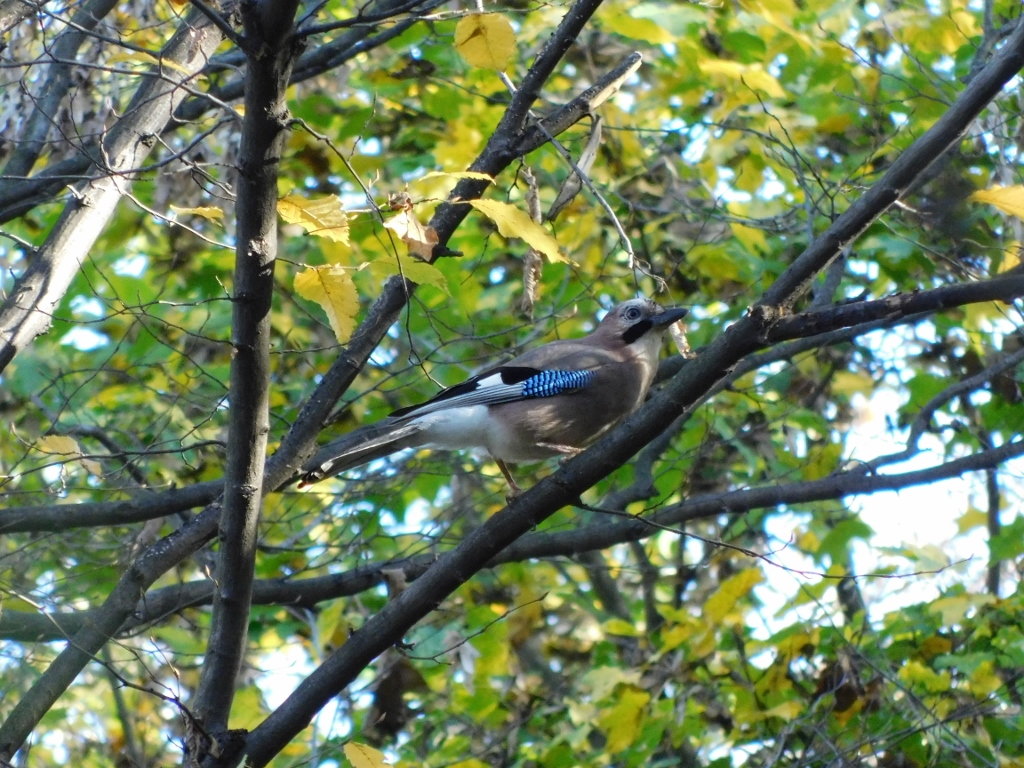 Eurasian jay (Garrulus glandarius)
Eurasian jay (Garrulus glandarius)
There is also fish in the lake and thus anglers often come here. On this day, one of them seemed as if camping by the lake.
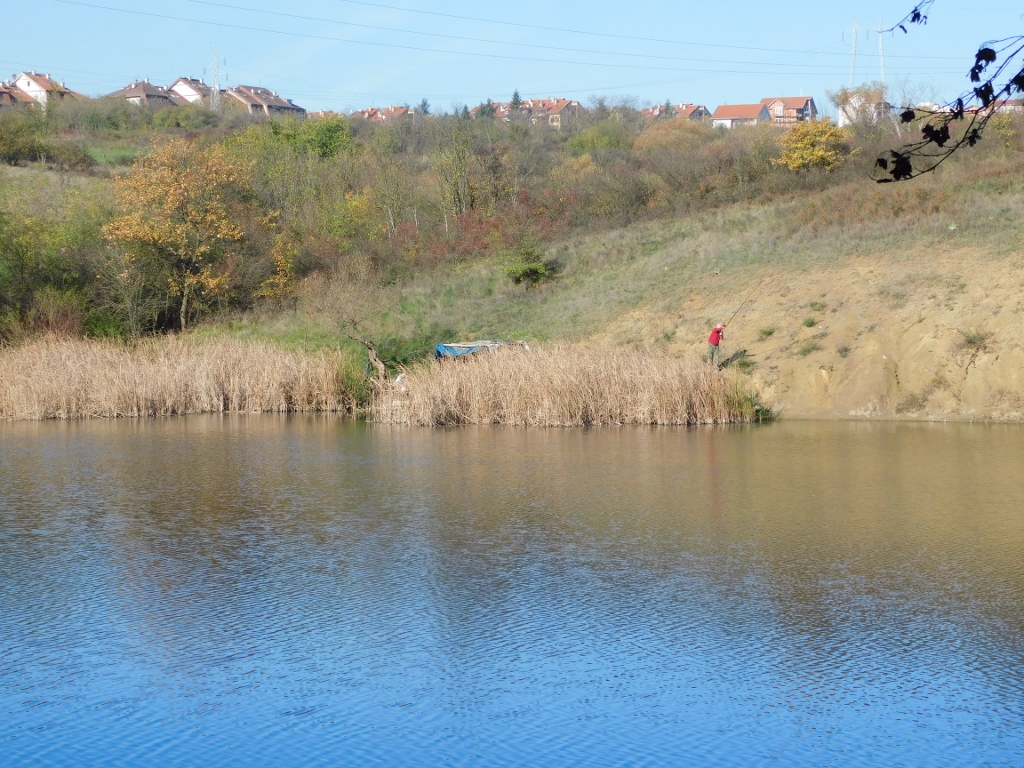 Pariguz Lake, a detail
Pariguz Lake, a detail
I continued nicely with my stroll around the lake, which at its beginning, towards the stream that fills it, narrows down, while the parts of the shore lit by the sun were very pretty and from time to time quite picturesque.
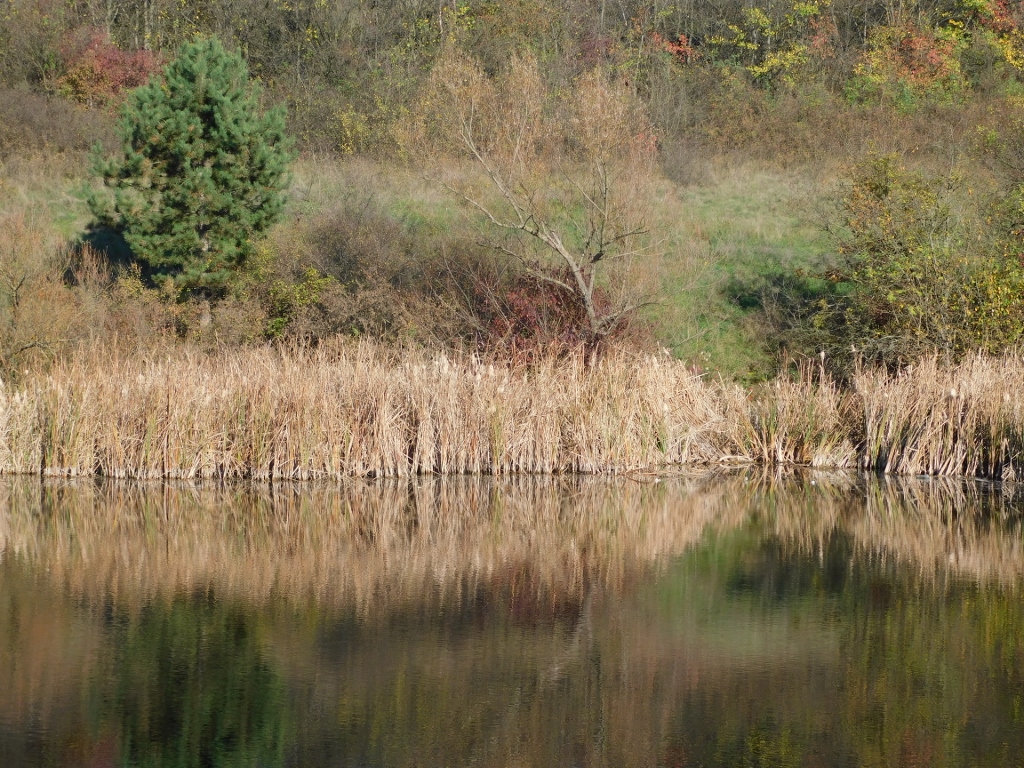 Pariguz Lake, a detail
Pariguz Lake, a detail
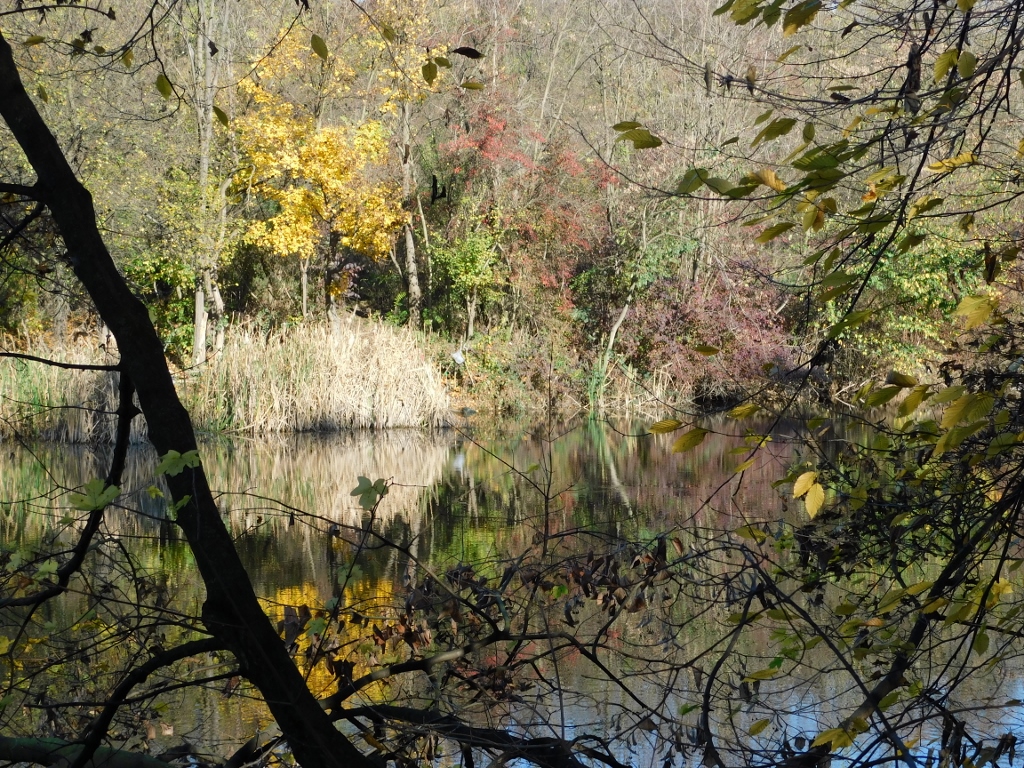 Pariguz Lake, a detail
Pariguz Lake, a detail
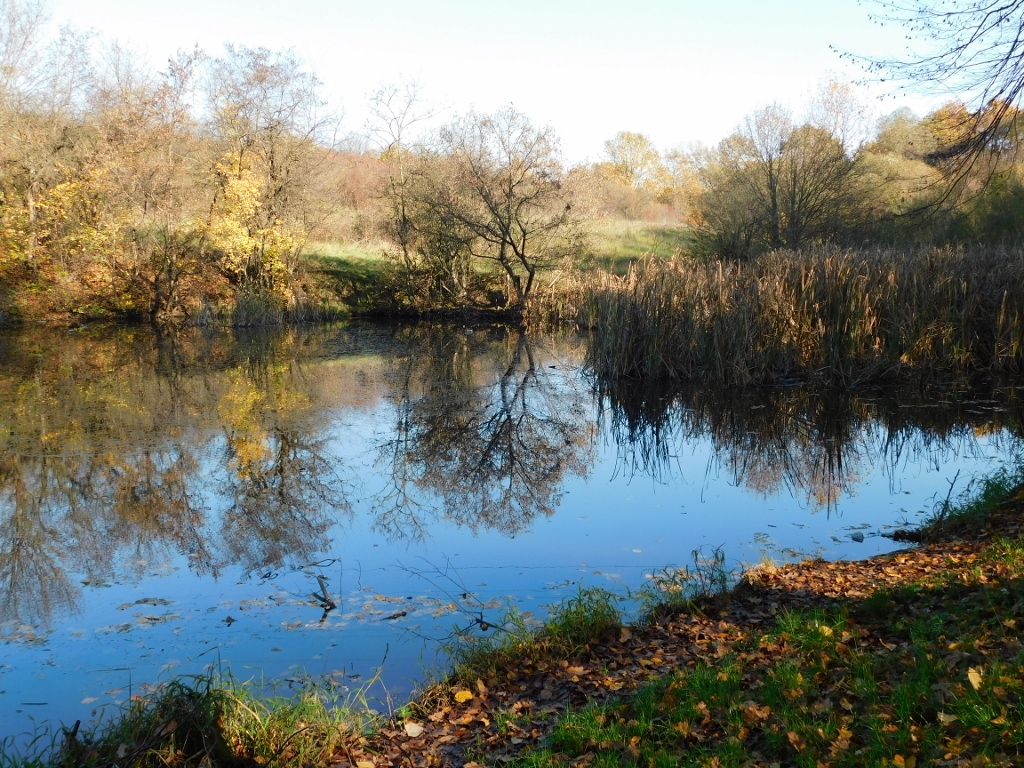 Pariguz Lake, a detail
Pariguz Lake, a detail
I wondered how I would cross the stream, but that question was soon answered.
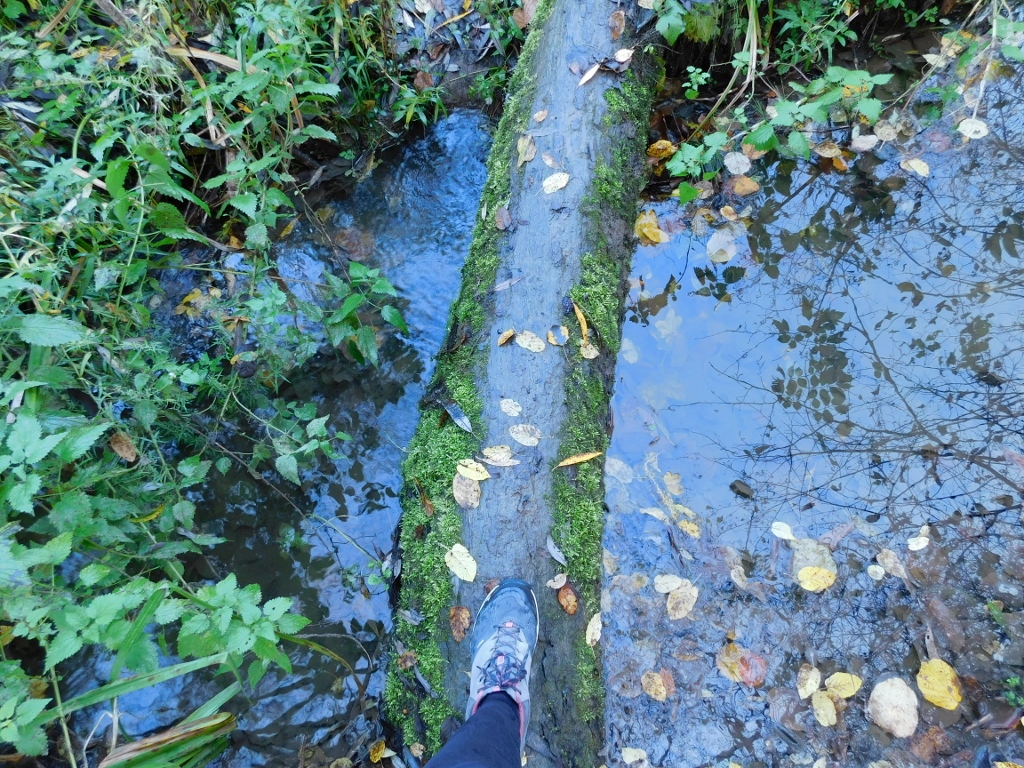 Pariguz Lake, crossing the stream
Pariguz Lake, crossing the stream
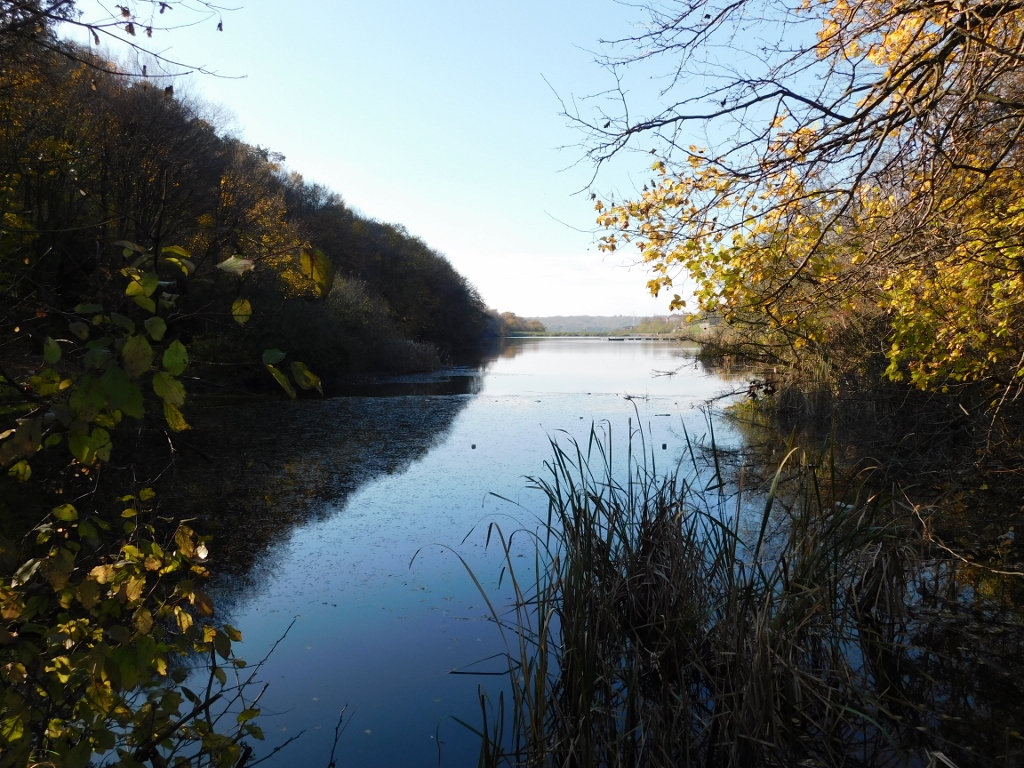 Pariguz Lake
Pariguz Lake
Once you cross the stream, you continue along a clearly beaten path, now without leaves and rather dry. Still, this does not mean that nature is not fully present – thus, for instance, in a couple of spots I came across some molehills in the middle of the path. It is important to know who’s in charge.
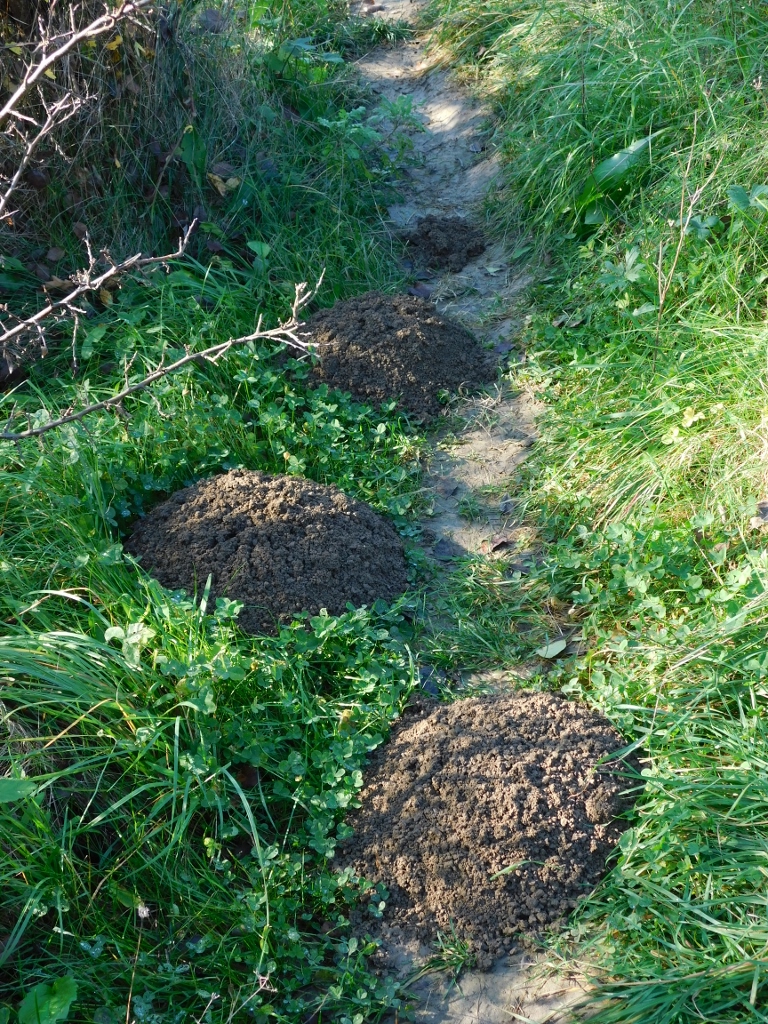 Molehills in the middle of the path beside Pariguz Lake
Molehills in the middle of the path beside Pariguz Lake
There is a fine view at the lake from the sun-lit side as well.
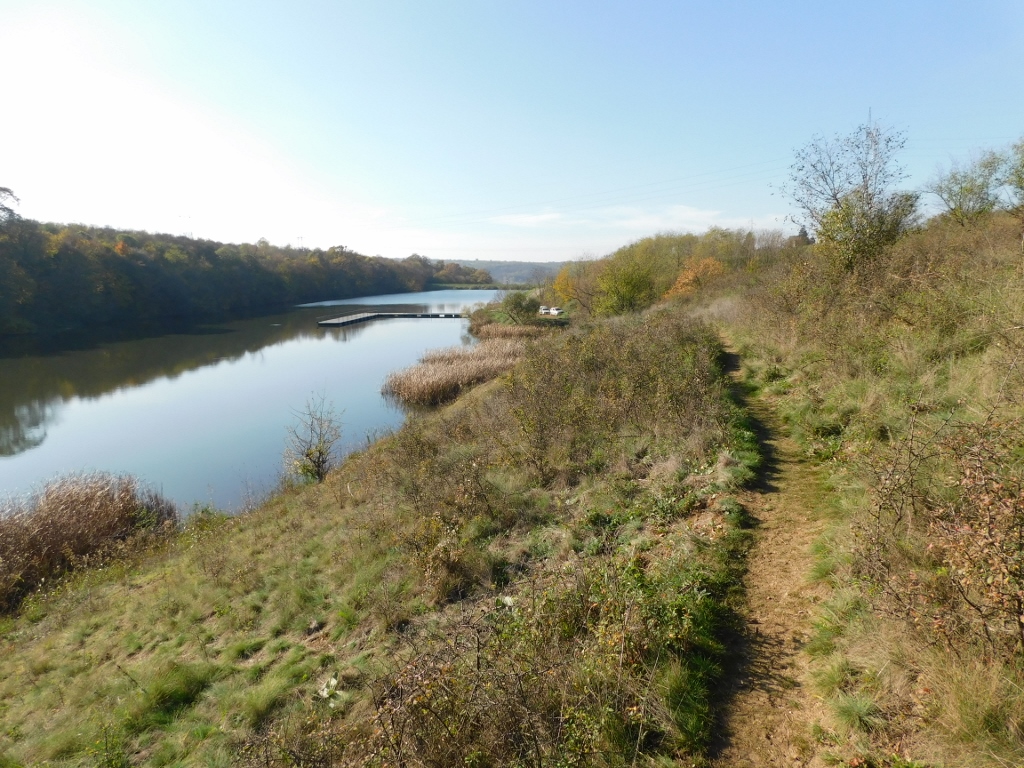 Pariguz Lake
Pariguz Lake
The path also took me by the “camp” of the angler who was now sitting there and talking to a younger couple. I did not want to bother them, so I just continued with my walk enjoying the nice sights and the wonderful sunny and comparatively warm November day.
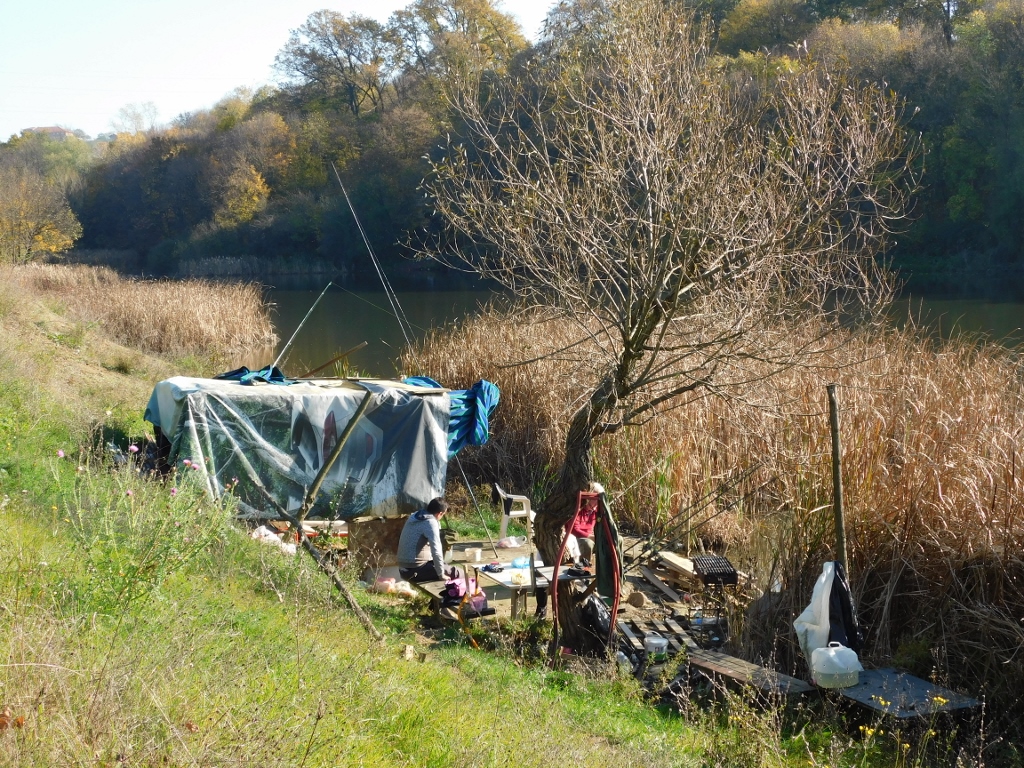 Pariguz Lake, a detail
Pariguz Lake, a detail
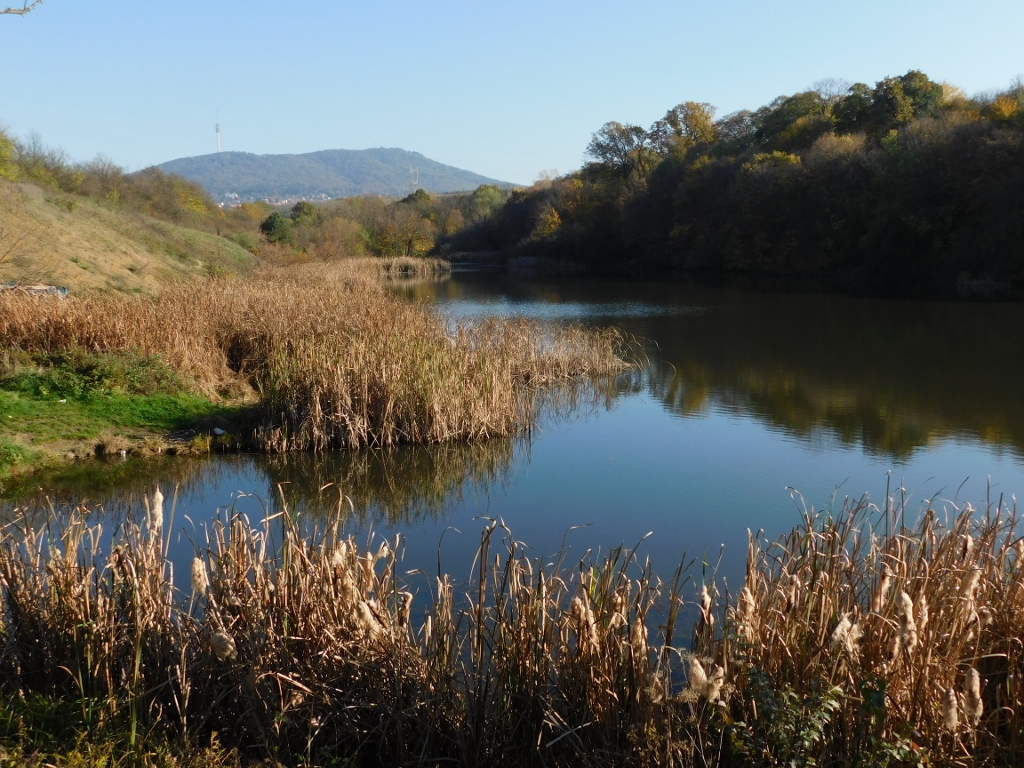 Pariguz Lake, a detail
Pariguz Lake, a detail
By the way, the lake is some 6-7 km away from mount Avala.
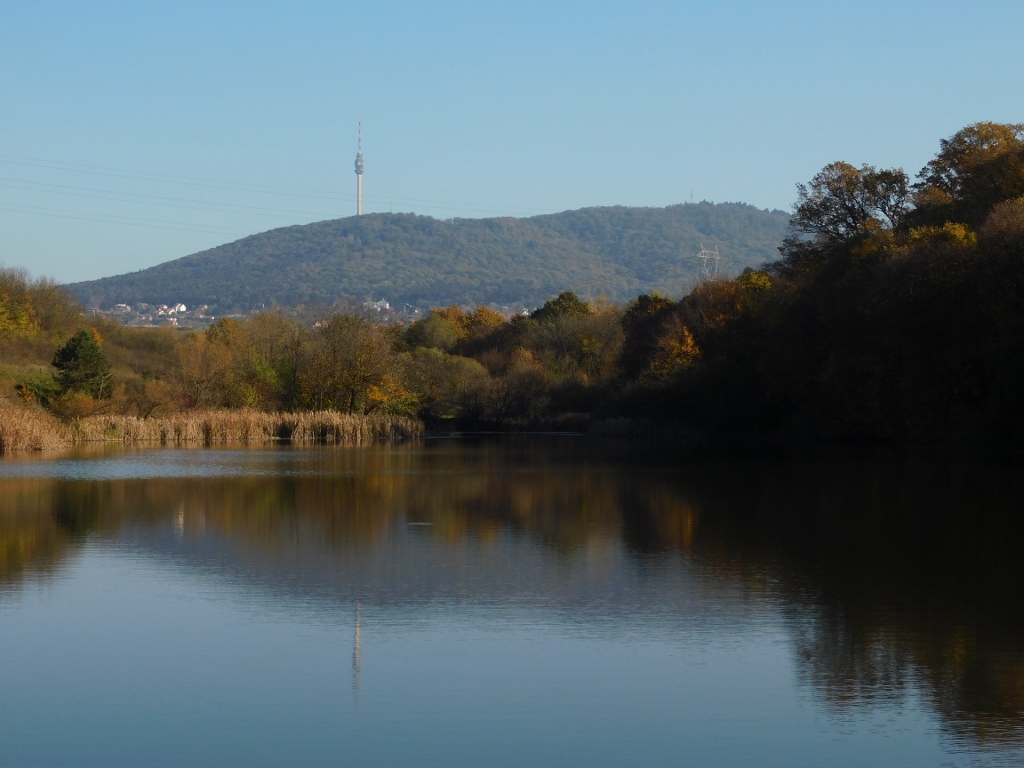 Pariguz Lake, view at Avala and the Avala Tower
Pariguz Lake, view at Avala and the Avala Tower
In the recent times, a rather solid pontoon has been installed on the lake which allows one to walk safely to the middle of the lake.
 Pariguz Lake, the pontoon can be seen to the right
Pariguz Lake, the pontoon can be seen to the right
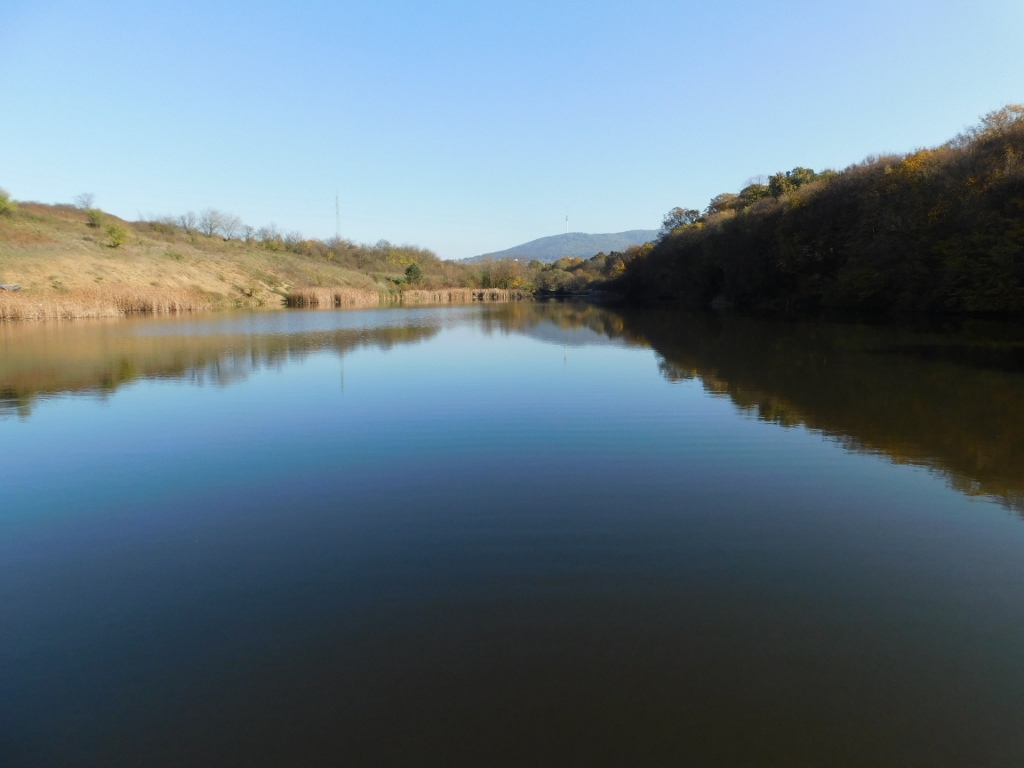 Pariguz Lake, view from the middle of the lake
Pariguz Lake, view from the middle of the lake
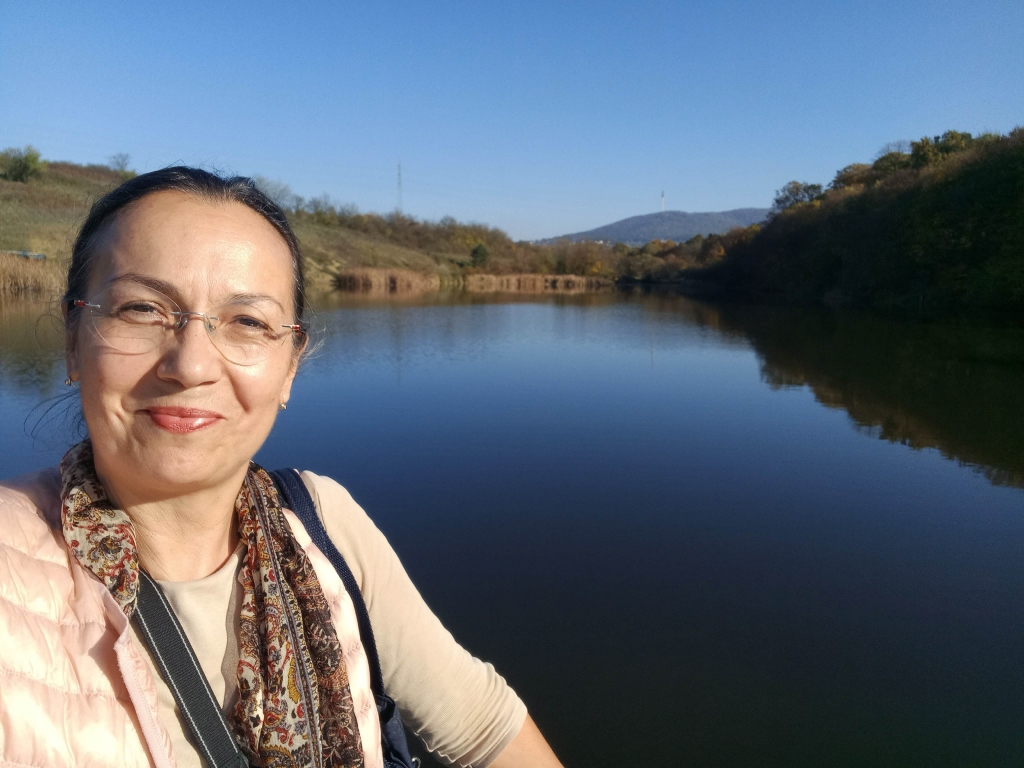 Selfie in the middle of the lake
Selfie in the middle of the lake
Talking about human interventions linked to the lake, I would like to mention a couple of things. There are plans for the lake and its surroundings to be developed in terms of the construction of a sports and recreational facility, a bike path that would connect Rakovica, Resnik and Avala, the cleaning of the bottom of the lake and removal of the inflow of wastewaters which some “entrepreneurial” local residents have directed right here, etc. For the time being, there is a narrow asphalt road (Ivanjička street in Resnik) that leads to the lake and a nice paved parking lot built there.
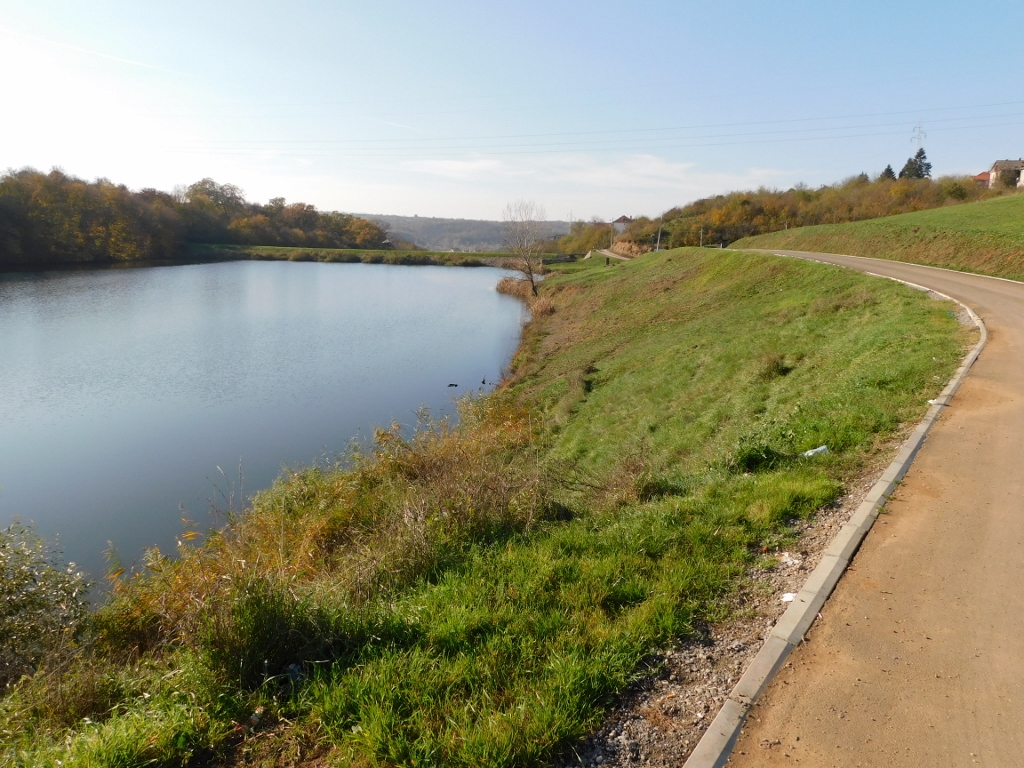 Pariguz Lake, on the right-hand side there is the road that leads from the parking lot further to the pontoon
Pariguz Lake, on the right-hand side there is the road that leads from the parking lot further to the pontoon
Beside the parking lot I also noticed a board saying that there was a free wi-fi zone there and there is also a pole by a bench with a nice view where apparently mobile phones can be charged for free. All of this suggests that the city and the municipality are working on the development of this area.
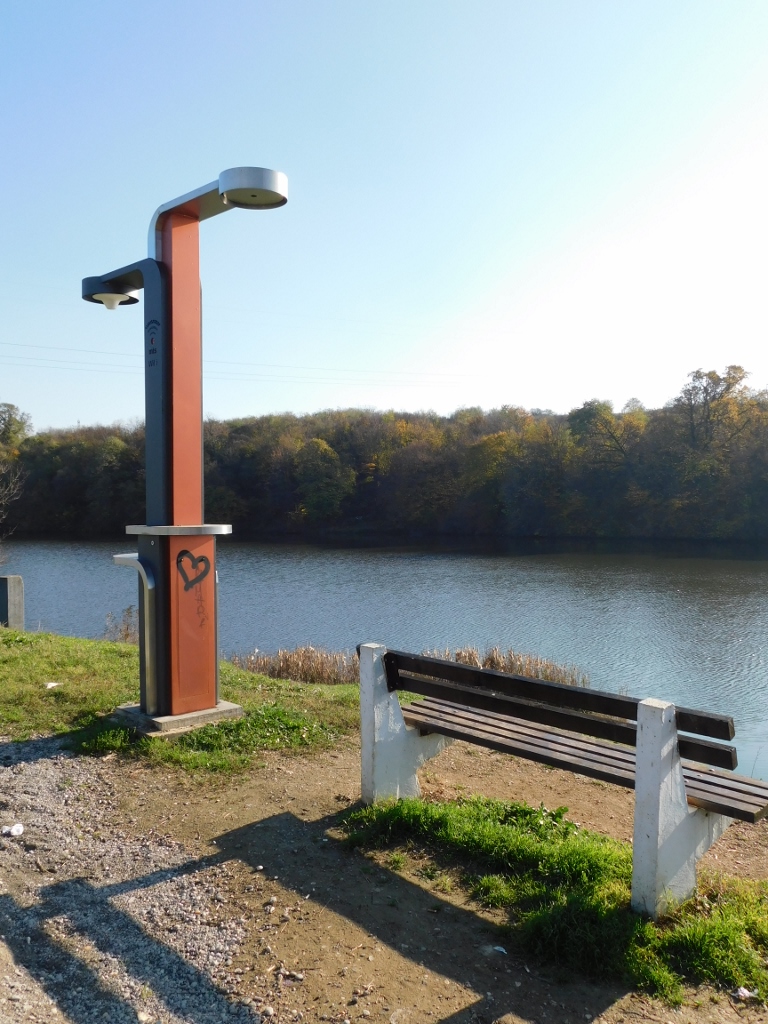 Pariguz Lake, a detail
Pariguz Lake, a detail
But, this is where the nice part of the story ends. The bad part of the story is that in several places, walking through the forest and also to the right from the bench that can be seen in the photo above, I saw dumps. Not big ones, meaning nobody comes with their garbage and dumps it there, but rather the waste left by the visitors. In several places by the lake, on the forest side, it may be easily concluded that people went there either only to fish or to have a picnic, so they left everything they could behind them and here by the bench they simply scattered various empty packaging.
I have found on the internet that a big problem as regards the lake is that there are no rubbish bins and that the city cleaners do not remove waste from this place. I’m sorry, but this is only a small and I would say a negligible part of the waste problem. This waste is not brought by birds, or fish, or the forest, or the city cleaners and local politicians for that matter (we are very ready to blame politicians for EVERYTHING). I personally do not like politicians as a phenomenon, but... This waste was left behind by the visitors who came here to “enjoy” nature. It would have been very nice if they had made it possible for the others as well.
Let me also mention that 18 km south of Pariguz Lake there is its “twin” in the shape of Duboki potok lake, near Barajevo. I have already written about it in an earlier travel story which also provides some photos from that other lake (https://www.svudapodji.com/en/south-belgrade-2021/).
On this day I completed my trip at the parking lot by Pariguz Lake and all I had to do was to walk back towards the building where my friend Bilja lives and where I had left my car. Along the way, I enjoyed some more the nature and the fine view. This was a perfect daily trip executed over two days. After a couple of photos, there is the map of the trip again.
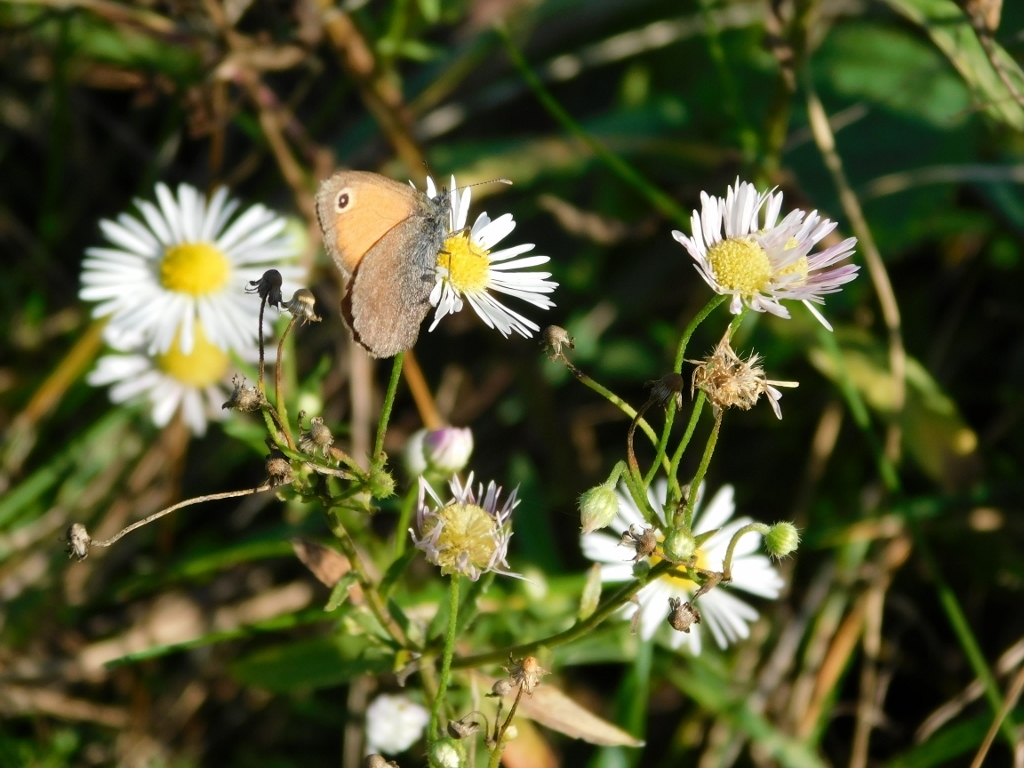 Butterfly that like me decided to enjoy some more in the autumn sun
Butterfly that like me decided to enjoy some more in the autumn sun
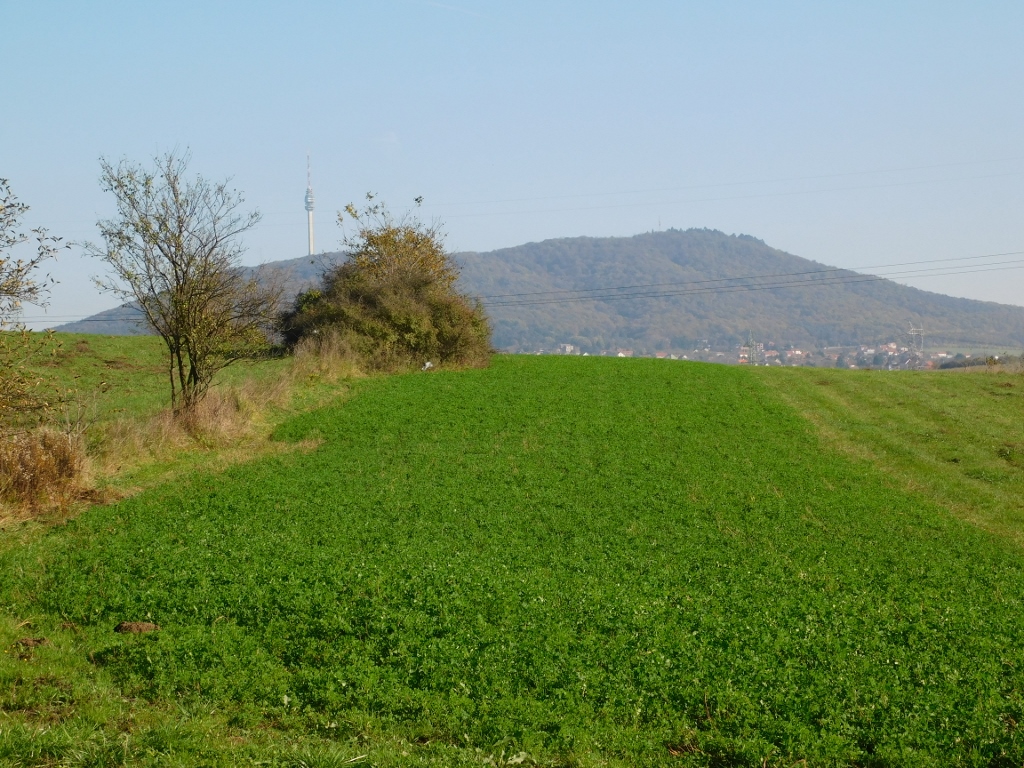 View at mount Avala and fields
View at mount Avala and fields